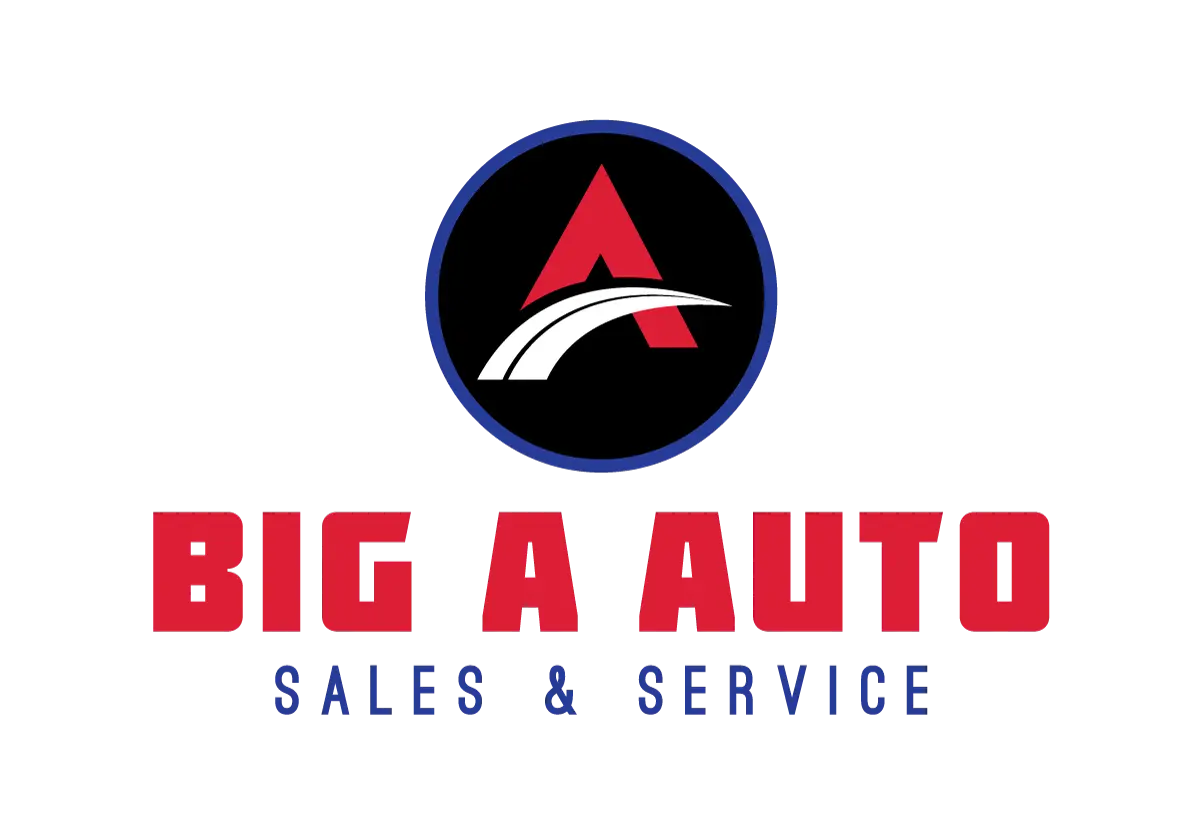Wheel Alignment Tips

Have your Wheel Alignment checked every other tire rotation and always when installing new tires. Wheel alignment sometimes referred to as tracking, is part of standard automobile maintenance that consists of adjusting the angles of the wheels so that they are set to the car maker’s specification. The purpose of these adjustments is to reduce tire wear, and to ensure that vehicle travel, is straight and true (without “pulling” to one side). Alignment angles can also be altered beyond the maker’s specifications to obtain a specific handling characteristic. Motorsport and off-road applications may call for angles to be adjusted well beyond “normal” for a variety of reasons.
Primary Angles
The primary angles are the basic angle alignment of the wheels relative to each other and to the car body. These adjustments are the camber, caster and toe. On some cars, not all of these can be adjusted on every wheel. These three parameters can be further categorized into front and rear, so summarily the parameters are:
- Front: Caster (right & left)
- Front: Camber (right & left)
- Front: Toe (left, right & total)
- Rear: Camber (left & right)
- Rear: Toe (left, right & total)
- Rear: Thrust angle
Secondary Angles
The secondary angles include numerous other adjustments, such as:
- SAI (left & right)
- Included angle (left & right)
- Toe out on turns (left & right)
- Maximum Turns (left & right)
- Toe curve change (left & right)
- Track width difference
- Wheelbase difference
- Front ride height (left & right)
- Rear ride height (left & right)
- Frame angle
?Setback (front & rear) is often referred as a wheel alignment angle. However setback simply exists because of the measuring system and does not have any specification from car manufacturers.
Measurement
A camera unit (sometimes called a “head”) is attached to a specially designed clamp which holds on to a wheel. There are usually four camera units in a wheel alignment system (a camera unit for each wheel). The camera units communicate their physical positioning with respect to other camera units to a central computer which calculates and displays how much the camber, toe and caster are misaligned. Often with alignment equipment, these “heads” can be a large precision reflector. In this case, the alignment “tower” contains the cameras as well as arrays of LEDs. This system flashes one array of LEDs for each reflector whilst a camera centrally located in the LED array “looks for” an image of the reflectors patterned face. These cameras perform the same function as the other style of alignment equipment, yet alleviate numerous issues prone to relocating a heavy precision camera assembly on each vehicle serviced.
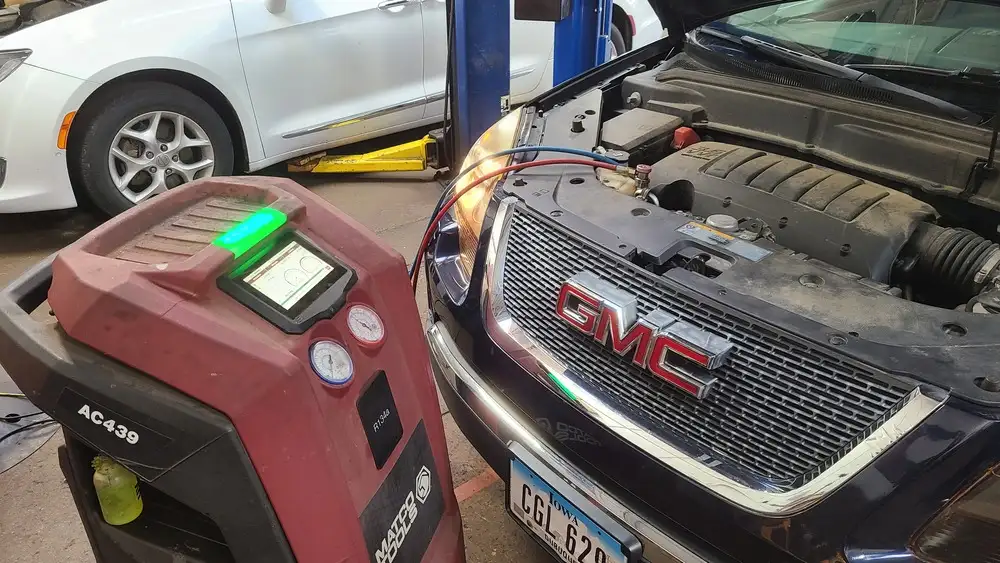
What makes up your Vehicle’s Air Conditioning?

Compressor
The Compressor is the most important component in your Air Conditioning (AC) system. The Compressor’s primary job is to pressurize and circulate the refrigerant throughout the system. The Refrigerant Gas, which is low pressure, is pressurized by the Compressor which causes it to Increase in Temperature.
Condenser
The Condenser is located in front of the Radiator. When the Pressurized and High Temperature Gas moves into the Condenser from the Compressor, the heat is released into the surrounding air. This heat release causes the Gas to Condense or change from a Gas to a Liquid.
Expansion Valve
This component regulates Refrigerant Flow into the Evaporator which directs the cooling process. In other words, when the High -pressure Liquid quickly moves through the Expansion Valve, it decreases quickly in pressure and temperature.

Evaporator
The Evaporator is housed inside the vehicle’s HVAC System and plays a vital role in the Heat Exchange. The low-pressure and low-temperature liquid now enters the Evaporator. The Evaporator removes heat from the cabin air and transforms it into a low-pressure gas.
Blower Motor and Fans
The Blower Motor and Fan work together to move air over the Evaporator and then circulate cooled air into the vehicle’s interior while at the same time removing heat from the Evaporator.
The Refrigerant returns to the Compressor, and the cycle is repeated.
07/16/2025Read more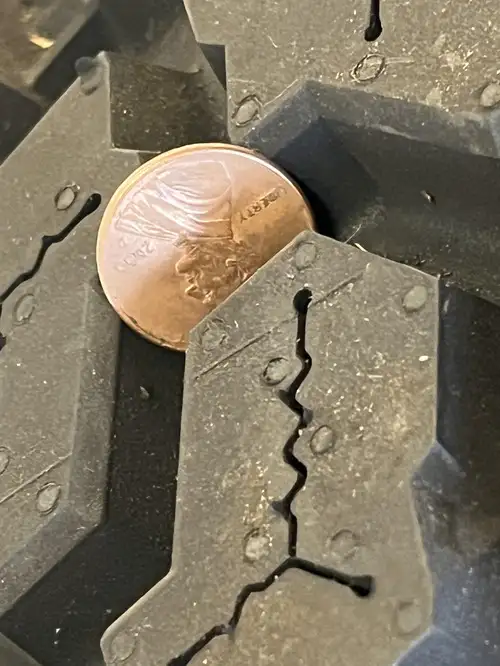
When is it time to purchase New Tires?
Your tires are one of the most important parts of your vehicle. How do you tell if they should be replaced?

Tread – The rubber on your tires is called Tread. All tires have rubber with ribbed patterns that help push water, slush and snow out of the way so that the rubber tread has good grip to keep your vehicle driving safely on the road.
The Penny test is the easiest way to check how much tread a tire has. Simply place a penny head first into the tread grooves of the tire. If you can see the top of Lincoln’s head, the tread of your tires is worn and it’s time to buy new ones. If the tread is covering a part of Lincoln’s head, then its not time yet to replace your tires.

Weather Damage – The sun’s ultraviolet rays and too much heat can cause damage to your tires. Deep Cracks in the rubber can be caused by the Ultraviolet rays or sometimes Deep Cracks can be caused by Road Salt.
Extreme Sun exposure can also cause Fading and Discoloration of the Tires.
Besides Sun exposure, Tires can deteriorate from excessive Cold too. The rubber hardens and cracks.
Dry rotting Tires comes from sitting in the elements for extended periods.
Visual Signs of Worn Tires – Inspect your tires for Bulges or Bubbles. Bulges on the sidewall or tread show weak spots in the tire. Bubbles are damage to the interior lining of your tire and come from impact such as hitting a curb or a pothole. Both make your tires unsafe to drive with.
Deep cracks, cuts and slices in your tires are signs they should be replaced. The tire damage is caused by hitting curbs, running over sharp objects, or just the weather extreme temperatures. This damage can weaken tires, cause leaks or even blowouts.
Uneven Tread Wear – Watch to make certain your tires are wearing evenly. Some Auto Repair Shops recommend having your tires Rotated every 6,000 miles.
Your tires should wear evenly across the tread. If the inside is more worn than the outside, or the outside is more worn than the inside, this signals that you may have issues with your alignment or suspension.

Tire Age – How old are your tires? Vehicle Manufacturers recommend that you replace your tires every six years regardless of the tread wear. Tire Manufacturers recommend that you get New Tires at least every 10 years.
Remember tires can degrade even if your vehicle sits in your driveway and never moves.
Tire Performance – Do your tires lose air pressure? If you are always having to put air in your tires, this may be a sign of damaged tires.
Poor traction when you drive in mud or snow is expected, but if you are slip and sliding on everyday roads, it may be time to get new tires.
If your vehicle seems to be vibrating or the tires clunk, thump or whine, its time to have your tires inspected or replaced.
03/27/2025Read more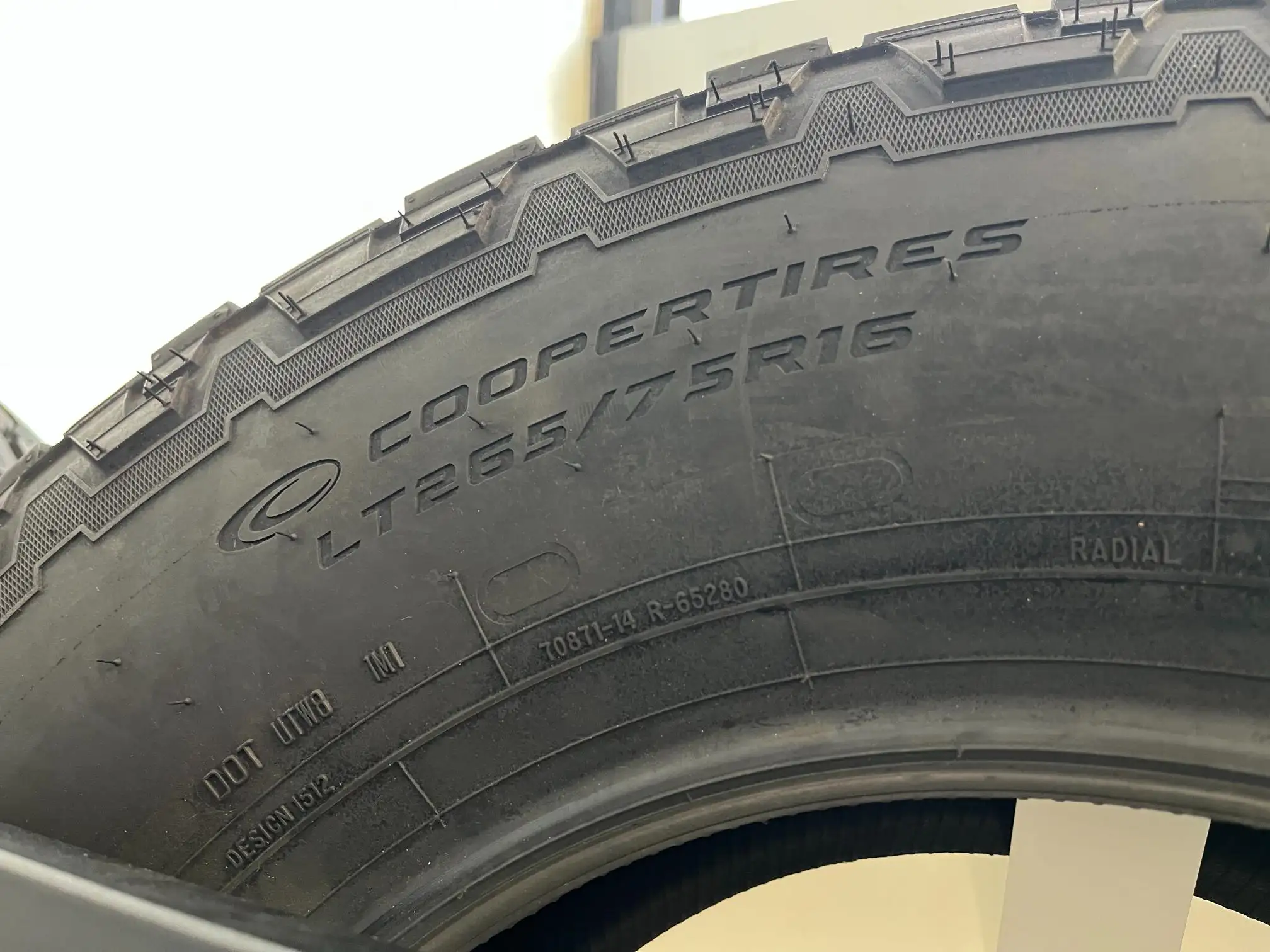
What do the numbers on the tires mean?
What do the numbers on the tires mean?
Our picture shows the following sequence: LT265/75R16

Type of Tire The first letters in the sequence represent the Tire Type. The letters you might see are P, LT, ST or T. In our example, the first letters are LT.
P: Passenger Vehicle Tire – these are typically rated for cars, SUV’s, Minivans, and smaller trucks that don’t carry loads. These tires are not meant for off-road use or driving on rough roads.
LT: Light Truck Tires – These tires are more heavy duty and are designed for Trucks and SUV’s that carry heavy loads, tow trailers and frequently travel on rough roads.
ST: Special Trailer Tires – These tires are designed for trailers, campers, boat trailers.
T: Temporary Tires – These tires are only used for Spare Tires. These should only be used temporarily to replace a flat tire.
Width of Tire The next three numbers in the sequence represent the Tire Width. In our picture, after the Tire Type of LT, the next three numbers are 265. This is the width of the tire in millimeters measured from sidewall to sidewall.
Tire Aspect Ratio The Aspect Ratio is a percentage. In our Example, 75 are the next numbers in the sequence. The 75 means that the tire’s height is 75 percent of its width. The Height of the Tire is measured from the edge of the wheel rim to the top of the tread. The larger the number, the taller the tire’s sidewall or profile.

Tire Construction Type Construction type is the letter following the two-digit Aspect Ratio. Looking at our example, it is an R that is right after the 75.
R: Radial – The layers run radially across the tire. Most tires on the road today are Radial. The internal layers are perpendicular to the axis of rotation.
D: Diagonal – These tires have a Diagonal or Bias ply construction. They have plies that are laid out in a diagonal, or crosshatch pattern.
B: Belted Bias – This is a Diagonal Bias tire reinforced with a Diagonal Belt of sturdy material like Steel.
Wheel Diameter In our example, the Wheel Diameter are the two numbers following the Tire Construction number which is 16. This number, 16, means that this tire would fit a rim with a 16-inch diameter. This number is important to know, as it is the number you’ll refer to when asked what your tire size is!
04/28/2025Read more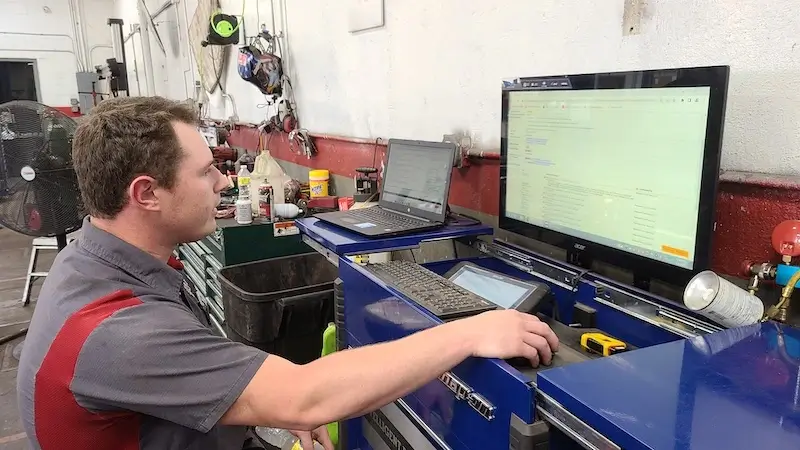
What is a Car Diagnostic?
What is a Car Diagnostic?
Have you ever been driving and suddenly, your car starts making weird noises? Or maybe it won’t start up at all? If so, you may need to get a car diagnostic. But what is that? And more importantly, what does it do? Keep reading to find out!
A car diagnostic is basically a test that is done on your car to figure out what is wrong with it. This can be anything from a simple check engine light to a more complex issue. A diagnostic will help you figure out what the problem is so you can fix it. There are many types, but they all do the same thing. They help you find the problem so you can fix it.
The most common type of diagnostic is the check engine light. This is a very simple test that just looks for any codes that are stored in your car’s computer. If there are any, it will tell you what they are and where they are located.
Another popular diagnostic is the battery test. This test checks the voltage of your battery and makes sure it is charging correctly. If there is a problem with your battery, it will let you know so you can fix it.
The last type of diagnostic is the fuel injection system test. This test looks for any leaks or blockages in your fuel injectors. If there are any, it will let you know so you can fix them.
All these diagnostics are important, but they all do the same thing. They help you find the problem so you can fix it. So, if you think you may need a car diagnostic, don’t hesitate to ask an auto mechanic near me.
09/25/2022Read more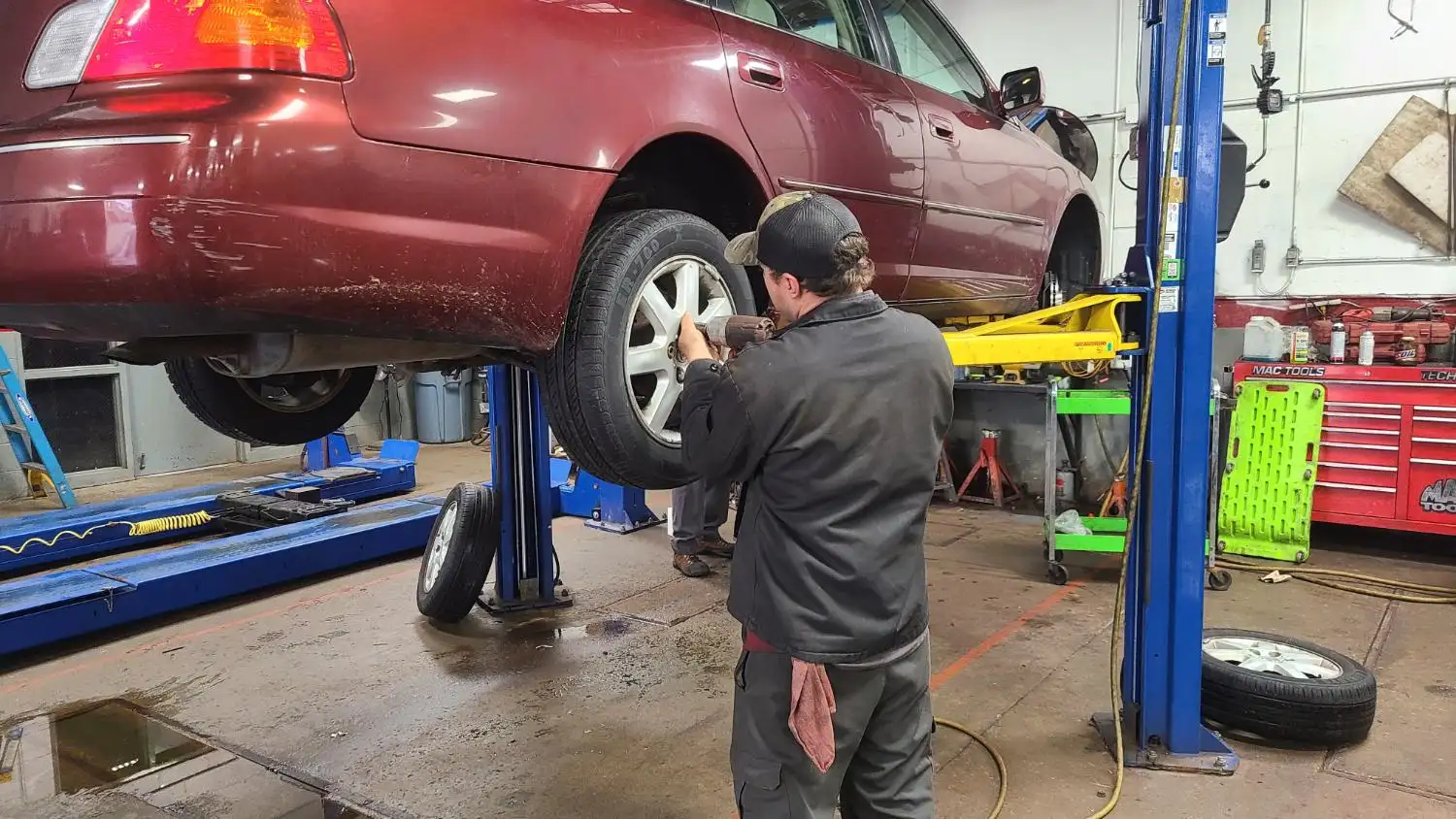
Should you Rotate your Tires?

There are a lot of benefits to Rotating your Tires. The biggest benefit is that it will extend the life of your tires as Rotating them will make your Tires wear evenly. You will also have a smoother ride and it will boost your Vehicle’s Gas Mileage because Rotating Improves Tire Traction. Rotating your Tires will definitely save you money!
It is recommended to Rotate your Tires every 5,000 to 7,500 miles. A Tire Rotation should be scheduled with every Oil Change.
Depending upon your Vehicle, there is a correct way to Rotate those tires. Think of it as “Cross to the Drive”, meaning if you have a Rear Wheel Drive or an All Wheel Drive, you would cross to the drive, which is the rear. That means you would Rotate your Left Front Tire to the Right Rear position and your Right Front Tire would Rotate to the Left Rear position. Those would be the cross to the drive. Then your other two tires would not cross, they would just move to the front. Your right Rear Tire would rotate to the Right Front position, and your Left Rear Tire to move to the Left Front position.
Now, if you have a Front Wheel Drive Vehicle and you are remembering the rule to Cross to the Drive, you will be crossing the Tires from the Rear to the Front. Your Right Rear Tire will cross and move to the Left Front position and your Left Rear Tire will cross and move to the Right Front position. Your other two tires will not cross, but they will move to the Rear. Your Right Front Tire will move to the Right Rear position and your Left Front Tire will move to the Left Rear position.
See the picture which shows the correct Rotations.
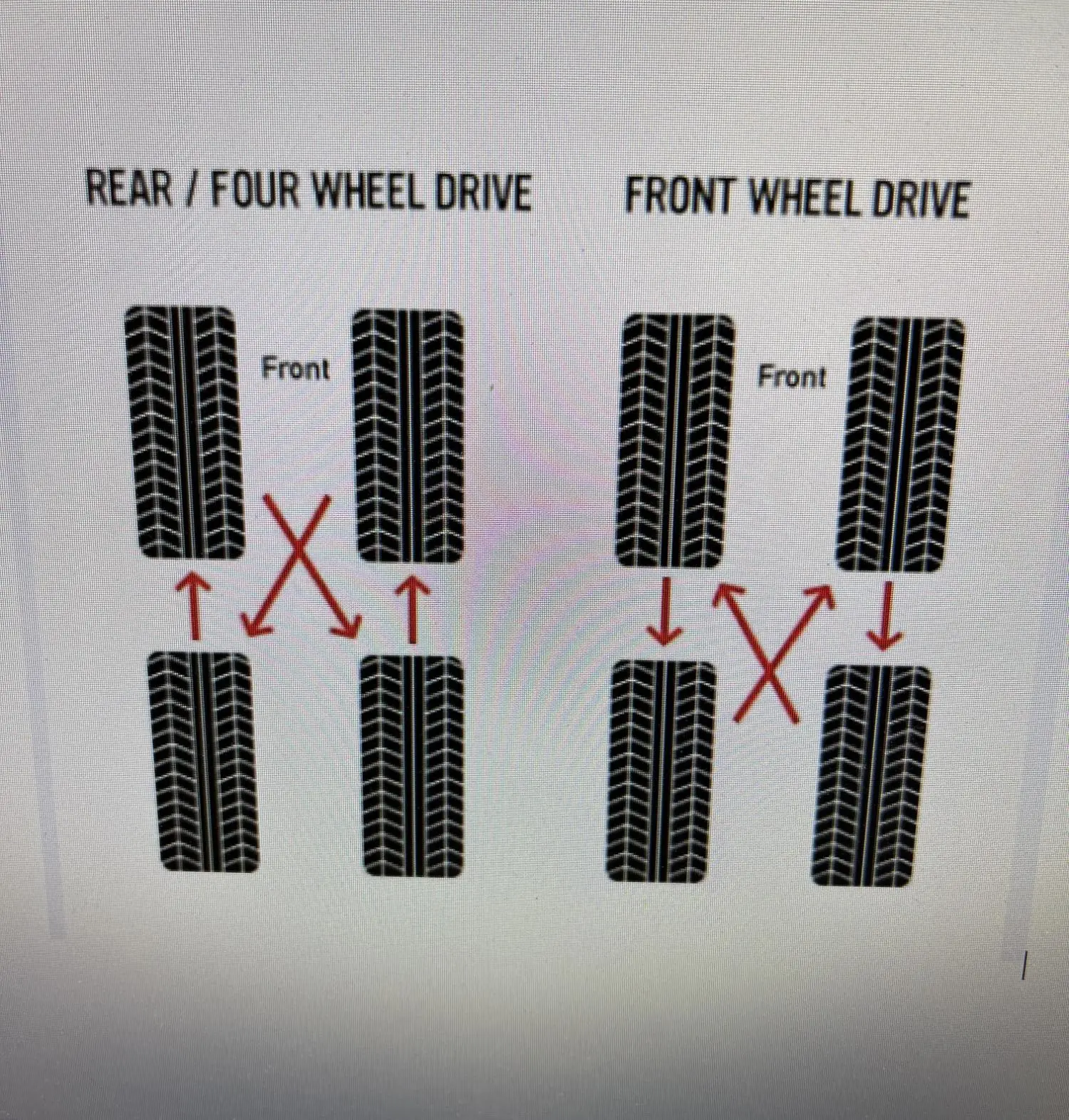
Also, when you are looking for an Auto Repair Shop Near Me that Rotates Tires, look for one like Big A Auto Sales & Service, Dubuque, IA 52001 that will Rotate your Tires for Free if you originally purchased Four Tires from them.
03/31/2025Read more
Why does my Brake Pedal feel Spongy?
When you press on your Brake Pedal it should always feel firm. If it feels spongy, then it is definitely time to schedule an appointment with your Auto Repair Shop to have your entire brake system looked at.
A spongy feeling when you press the brake pedal could indicate any of the following problems:
Brake Fluid Leak
To find a Brake Fluid Leak, look for any visible wet spots around the wheels while having someone pump the brakes. Check the Lines and the Brake Hoses. Also check the Hoses for Cracks or Soft Spots. These can easily be replaced.

Air in the Brake Line
Brake Fluid will not flow correctly if there is Air in the Brake Line. An Auto Mechanic will flush the brake fluid, called Bleeding the Brakes, which will get rid of the air in the lines.

A Faulty Master Cylinder
The Brake Master Cylinder is a Hydraulic Pump. When the brake pedal is pressed, a piston pushes through the Master Cylinder forcing the Brake Fluid through the lines to the Cylinders on each wheel. Loss of Pedal Pressure could be caused by a Worn Seal in the Master Cylinder. The Seals can be replaced, but after 70,000 miles, it might be wiser to replace the Master Cylinder.
Leaking Wheel Cylinders
The Wheel Cylinders or on some vehicles the Slave Cylinders, receive their hydraulic pressure from the Master Cylinder. The Pressure pushes the Brake Shoes against the Drums causing the wheels to slow down. A leak around these Cylinders could cause your Brake Pedal to feel spongy when being pressed.
10/14/2024Read more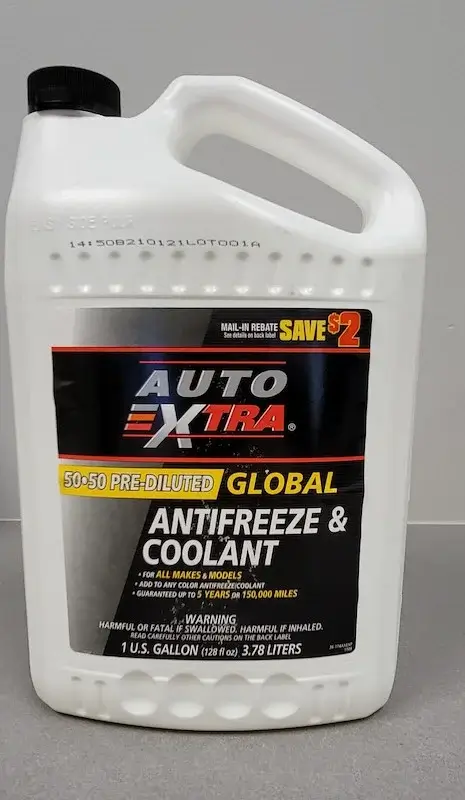
What is a fluid exchange?
A fluid exchange is the process of removing old, dirty fluids from your car and replacing them with fresh, new fluids. Fluids are essential for keeping your car running smoothly and preventing expensive repairs. Over time, fluids break down and become contaminated with dirt, debris, and other harmful particles. This can cause clogs in your car’s systems and lead to major problems like engine damage or transmission failure. By exchanging your fluids regularly, you can prevent these issues and keep your car running like new.
How often should I exchange my fluids?
The frequency of your fluid exchanges will depend on the type of fluid and the manufacturer’s recommendations. In general, though, most fluids should be exchanged every 30,000 miles or so. If you drive in stop-and-go traffic or in extreme conditions like very hot or cold weather, engine oil may need to be exchanged more.
What are the most common fluids that need servicing?
As we mentioned, the four most common fluids are engine oil, transmission fluid, brake fluid, and coolant. Let’s take a closer look at each one:
Engine oil lubricates your engine’s moving parts and prevents them from overheating. It also helps keep your engine clean by trapping dirt and debris. Over time, engine oil breaks down and becomes contaminated.
Transmission fluid helps your car’s transmission shift smoothly and prevents premature wear. Like engine oil, it also breaks down over time and needs to be replaced periodically.
Brake fluid helps your brakes work by transferring hydraulic pressure from the pedal to the calipers. Brake fluid can become contaminated with moisture, so it needs to be exchanged every few years to prevent corrosion and other problems.
Coolant helps keep your engine cool by circulating through the radiator and absorbing heat. Over time, coolant can become contaminated with debris and minerals, so it needs to be flushed and replaced more often.
A fluid exchange is an important part of car maintenance. By exchanging your fluids regularly, you can prevent expensive repairs and keep your car running like new. So don’t wait – if it’s been a while since your last fluid exchange, schedule one today!
10/05/2022Read more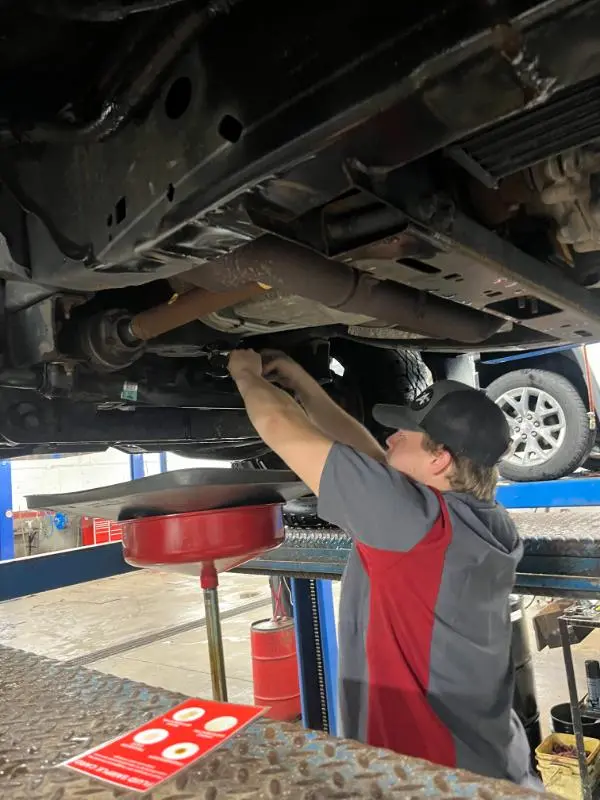
What Happens if you Never Change the Oil in your Car?
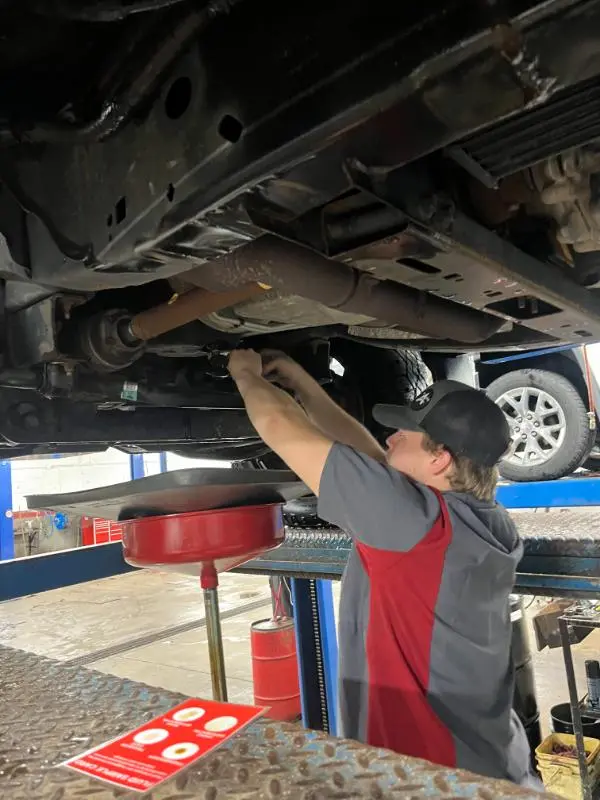
If you neglect to change the Oil in your Car, the Oil will Gel or Solidify and eventually turn to Sludge. When the Oil becomes Thick, or Sludgy, it is not able to lubricate all the Moving Parts of the Engine. Some parts that need oil to work correctly are the crankshafts, the bearings, camshafts and the valve train components. Over time your Engine could Overheat, you could Blow a Gasket or your Engine could Seize Up.
Changing your Oil Regularly also keeps your Engine running Clean. With each Oil Change, your Fuel Filter is also changed. A dirty or Clogged Fuel Filter forces debris and grime to circulate back through your car’s Engine. Dirty Oil makes your Engine work harder which in turn uses more Fuel forcing you to Fill Up more often.
Poor Performance, Decreased Fuel Economy or Ruined Seized Up Engines are all problems that you will encounter if you Never Change your Oil. In the long run, it is much more Economical to have your Oil Changed as often as recommended by your Manufacturer. Changing your Oil is the easiest way to keep your car running at it’s peak performance.
05/23/2024Read more
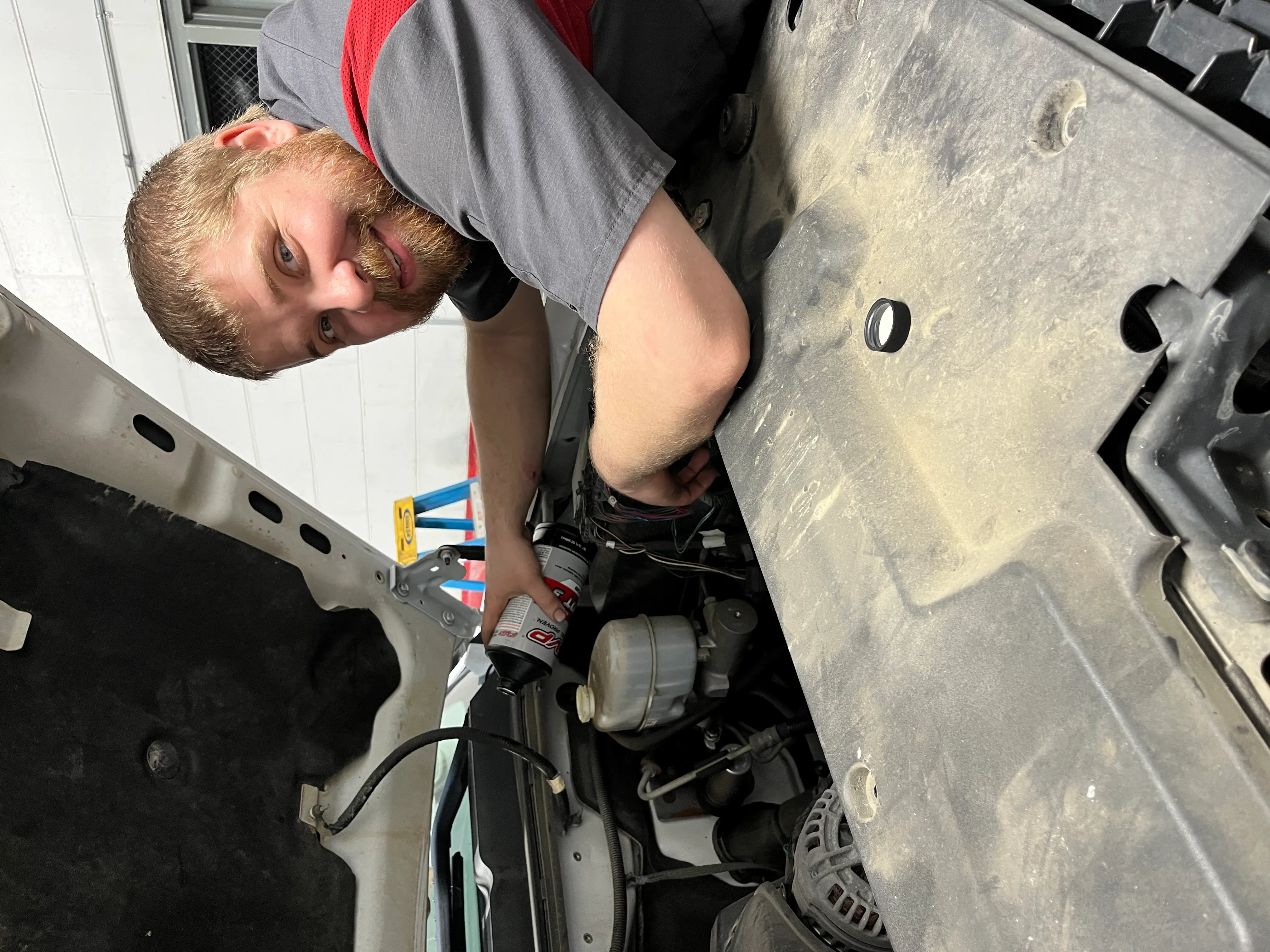
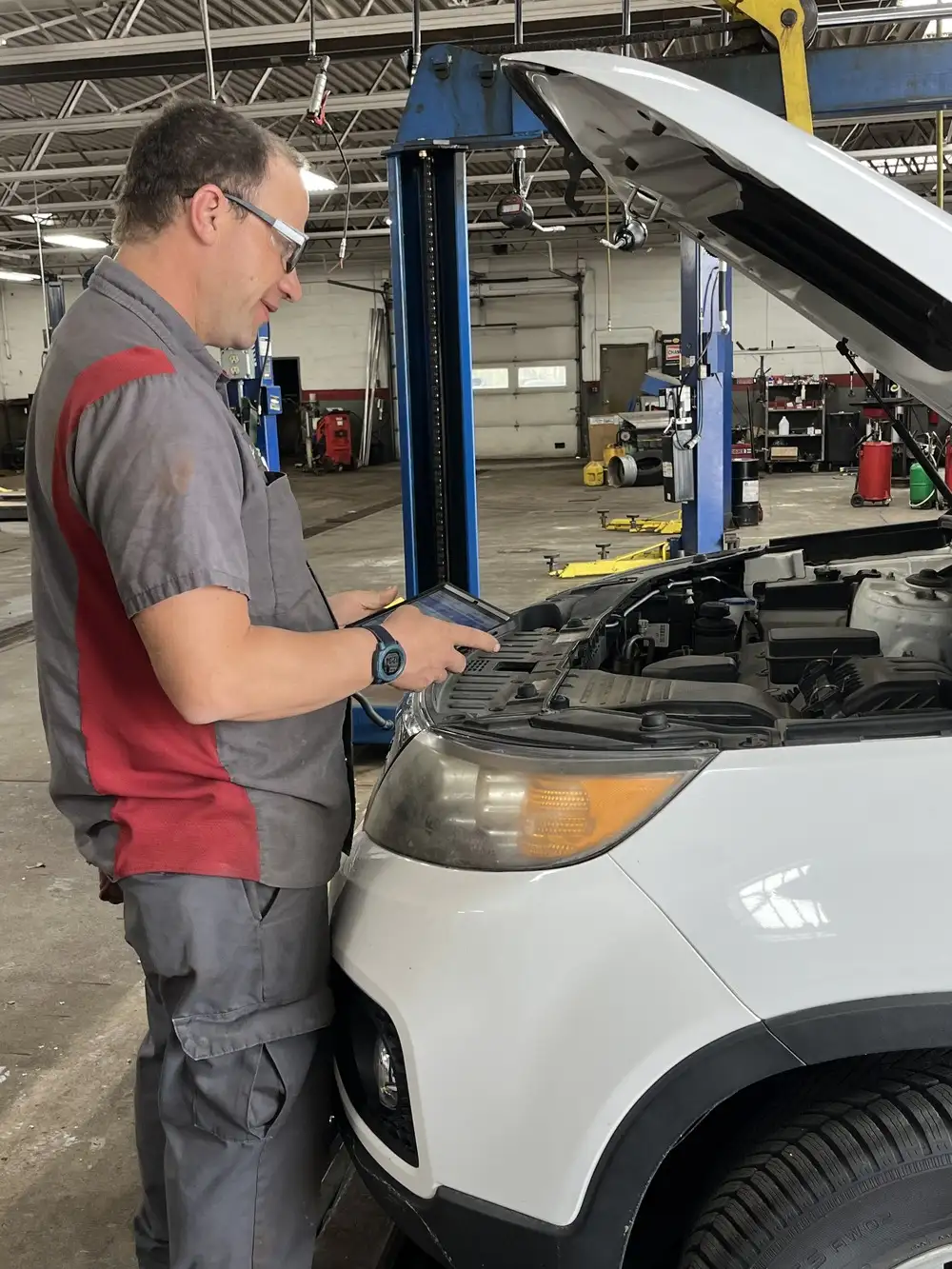
What are the 100 Deadliest Days on the Road?
Statistics show us that there is a sharp Increase of Fatal Accidents between Memorial Day and Labor Day. This is the time of the year that we have Increased Travel with Vacations, the Kids are out of School and there are New Teen Drivers, and the days are longer and there are just more People out Driving and enjoying the warmer weather.

It is so Important to do a Vehicle Safety Check to keep you and your family safe. Some things you can check yourself are as follows:
Lights – Make sure your lights are all working.
Windshield Wipers – Inspect your Wipers to make certain they are not torn.
Mirrors – Keep them clean and Adjusted correctly
Seatbelts – Make sure you and your passengers are Safely Buckled Up!
Tires – Check your Tire Pressure, Tread Depth and look for any Bulges or Cuts.

It is also Extremely Important to have a Trusted Auto Repair Shop check out the following things to make sure your Vehicle is Ready for Summer! Most Auto Repair Shops will do Courtesy Inspections as a part of their General Maintenance every time your Vehicle comes in. Always go to a Repair Shop where Inspections are being done.
Warning Lights – Have them checked. They are on for a Reason!
Tires – Check for any Damage like Cuts and Bulges, besides checking the Tire Pressure and Tread Depth.
Brakes – Have your Brake Pads and Brake Rotors checked along with Brake Fluid Levels checked.
Battery – Check the strength of the Battery. Look for corrosion and make sure the Battery posts are clean.
Check Fluids – Oil, Power Steering Fluid, Brake Fluid, Transmission Fluid, Coolant, Windshield Washer Fluid
Belts & Hoses – Look for Cracks, Shinny Spots and Fraying on your Belts. Check hoses for cracks and soft spots.
Suspension & Steering – Checking for Wear and Tear and loose components.
Chassis and Frame – Watch for Rust and Loose Parts
Exhaust – Check for Leaks and Damage
Enjoy your Summer! Be a Responsible Driver to keep you and your family Safe!
 05/29/2025Read more
05/29/2025Read more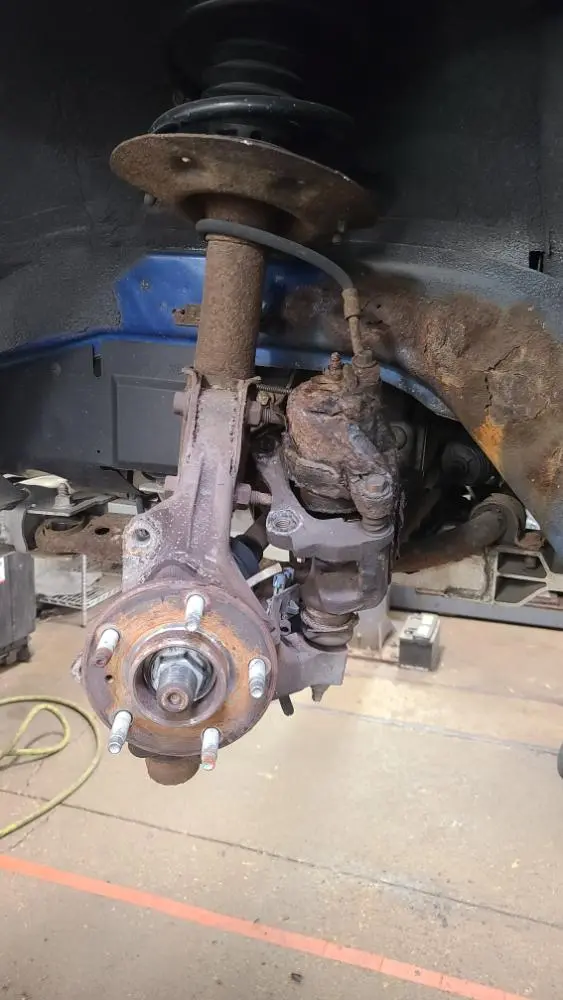
What makes up your Car’s Suspension System?
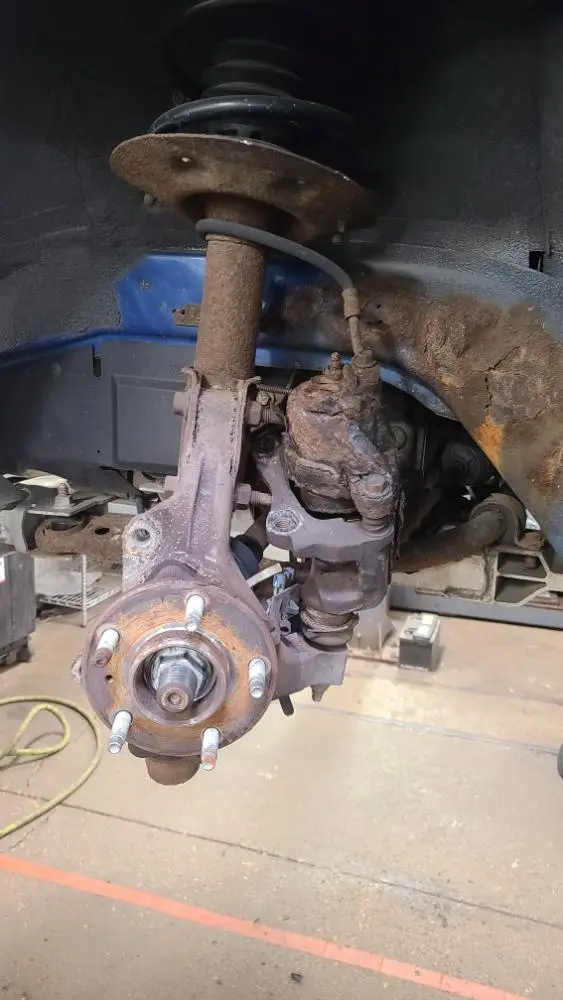
A Car’s Suspension System’s job is to Balance Road Handling and Ride Quality. The Suspension System helps absorb shock from Uneven Surfaces. It affects how your car will handle Turns, Potholes and Rain. The following are all parts of your car’s Suspension System.
Struts
The Strut is the Support that connects the Wheels to the Body of the Car. It supports the Spring and the vehicle’s weight. It also absorbs a lot of bumps as you drive over uneven roads. The Struts also help maintain the Vehicle’s Alignment. According to most manufacturers, struts should be replaced every 50,000 miles.
Shocks
Shocks look like a hand pump and are usually mounted vertically behind the tires. Their job is to absorb bumps in the road which makes you able to control the vehicle easier, especially if you are driving fast. The Shocks and Struts work together to keep the car body suspended above the Wheels and off the Ground. You should replace Shocks and Struts at the same time for a more even ride.
Coil Springs
Coil Springs are big Springs that keep the car at its desired height. When you drive over a bump, the Spring will compress and recoil which reduces the impact of the bump and makes for a smoother ride.
Ball Joints
Ball Joints connect the Wheels to the Suspension and allow them to move together like a hip joint in your body. They allow the wheels to move up and down and help the tires to stay in contact with the road.
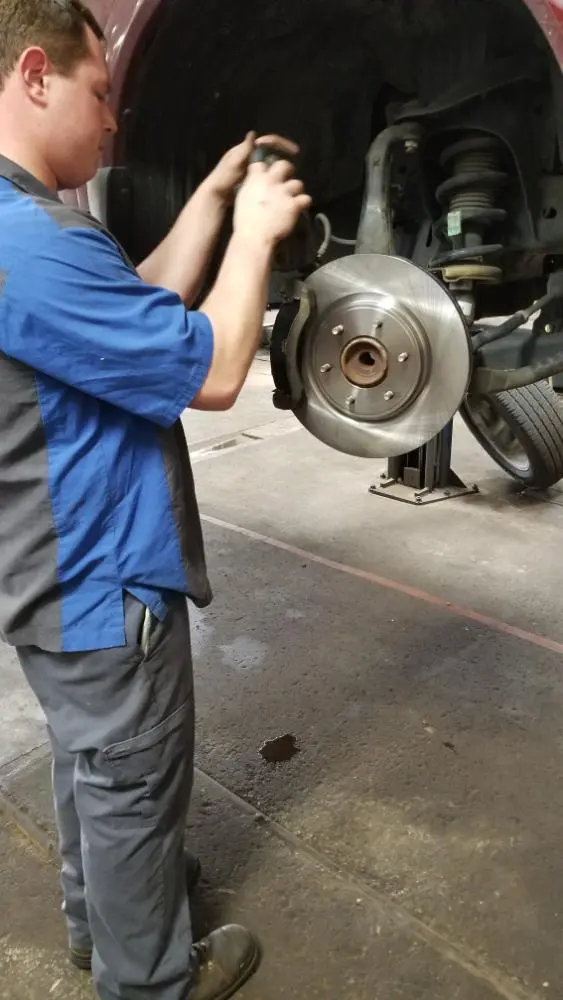
Control Arms
Control Arms connect the Steering Knuckle to the Car’s frame and help to stabilize the vehicle when it’s moving. They help absorb bumps and reduce vibrations when steering.
Sway Bars
Sway Bars are Metal U-shaped Bars that connect the front wheels to help keep the vehicle from rolling over. Sometimes these bars are called anti-roll bars, stabilizer bars or roll bars. They are part of the Suspension System that works by resisting the twisting forces that occur when a vehicle turns.
08/15/2024Read more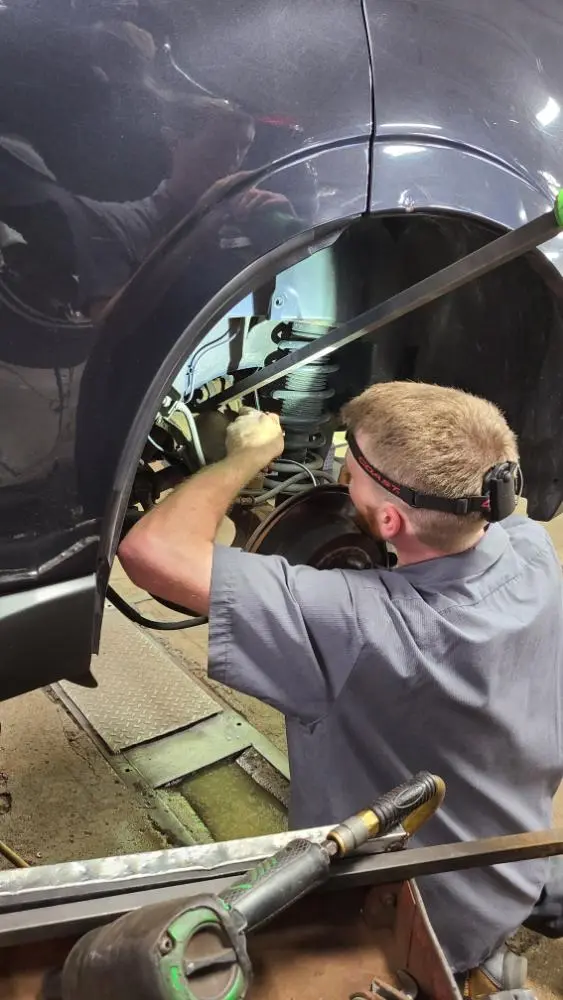
What Questions should I ask when looking for an Auto Repair Shop?
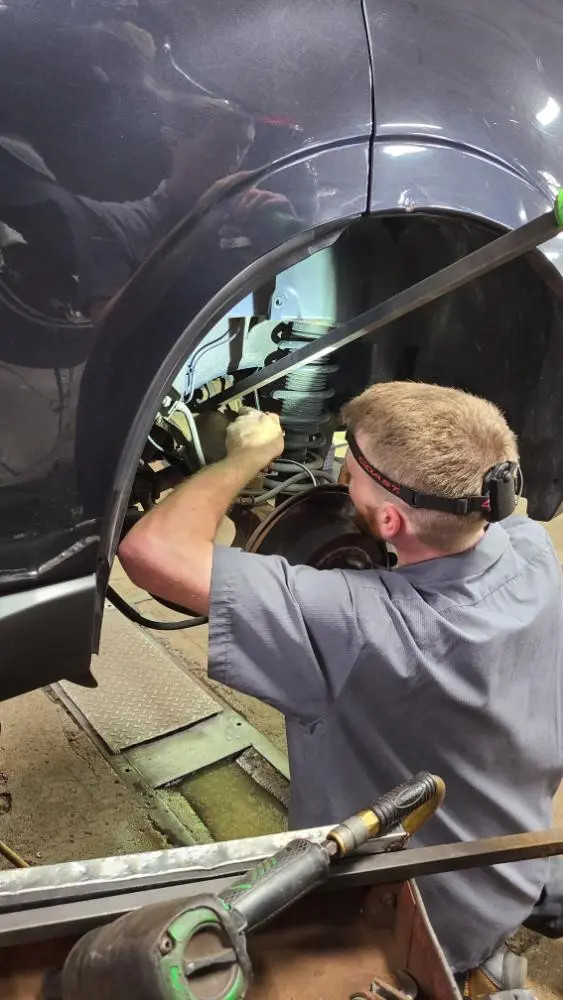
If you own a vehicle, at some point you will probably need to take it to an Auto Repair Shop. Even the most handy DYI person doesn’t have all the specialized tools needed for some repairs and will have to visit an Auto Repair Shop. Here are some questions you should ask when deciding which Auto Repair Shop to take your vehicle too.

- Do you Work on cars like mine? Not all Mechanics work on every Make & Model. Some Auto Technicians specialize in certain models. You should ask them how often they see a vehicle like yours. If your vehicle is one that they don’t see very often, maybe they can recommend a different Auto Repair Shop.
- Will you give me an Estimate of the Cost? Yes, once your vehicle is in the shop, you should get an Estimate in writing of what the Parts and Labor will be Before they start the Repair. A reputable Auto Repair Shop will be happy to go through the Estimate line by line so that you understand exactly what is needed. If they feel pressured into doing a repair, or they are reluctant to explain what is needed, find another Auto Repair Shop.
- Can you show me the problem? Where is the Noise Coming from? A trusted Mechanic will take the time to explain and show you what is going on with your vehicle. This is where Auto Shops with digital inspections with pictures really helps to show the problem.
- Is this something that needs to be Repaired right away? What are my Options? A lot of Vehicle Issues need to be taken care of immediately, while other repairs can be put off for a short time. Your mechanic should let you know how serious the issues are or if you can wait and have your vehicle repaired in the near future. Unfortunately, some Shops are high pressure and tell you that everything needs to be done immediately.
- Ask your Mechanic what they would do if it was their vehicle? Also ask What might happen if you don’t do the repair right away? A good Mechanic or Service Advisor needs to make recommendations and they should advise you as to what option you should do. They should also let you know a timeframe for when the repair should be done.
- Do you Warranty the Parts and Labor? Many shops will extend a warranty on parts and labor. This means that once the repairs are made and you leave, if that repair fails or you have the same issue, would the Auto Repair Shop cover the cost to look at and repair it again.
07/14/2024Read more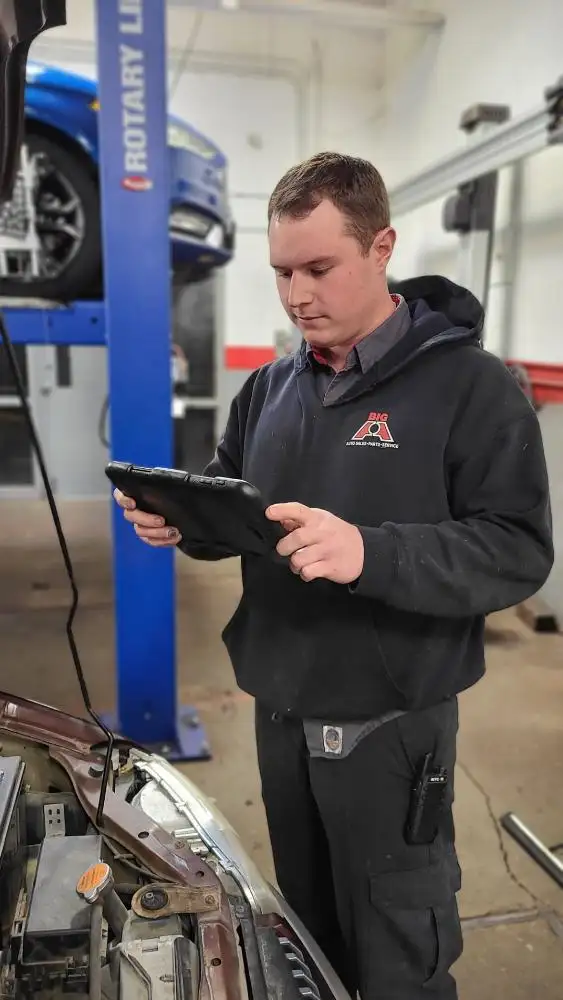
Getting my Car ready for that Summertime Road Trip!

School is out for Summer and making plans to take the Family on Vacation? Make sure your Vehicle is tuned up and ready to go! Here are some things you need to have checked out on your Vehicle before you hit the road!
Warning Lights – Make certain that all Warning Light problems have been addressed. You don’t want to be out on the road and have problems.
Tires – Check and make certain that all Tires are inflated to the correct pressure. The correct pressure should be noted on the tire. You also want to make certain that your Tires have a Deep enough Tread for long travel. Most Tire manufacturers set 3/32 of an inch as the minimum thickness for safe driving.
Windshield Wipers – Make certain that the wipers are not torn and they don’t smear the Windshield when in use. Also check to make certain the Windshield Washer Fluid is filled.
Battery – Have your trusted Service Technician test your battery to make certain it holds a good charge.
Air Filter – Make sure the Air Filter is Clean and not Clogged with leaves and debris.
Air Conditioner/Heater – Is everything working properly with your AC? The last thing you want is to be hundreds of miles from Home on a Hot Summer Day and your AC doesn’t work correctly.
Belts and Hoses – Look for Cracks, Glazing (Shiny Spots), and fraying on your Belts. These are all signs that your Belts need to be replaced. Check the Hoses near their connection sites for cracks, soft spots or leaks.
Check Fluids – Besides your Windshield Washer Fluid, you should check your Engine Oil, Power Steering Fluid, Brake Fluid, Transmission Fluid and Radiator Coolant.
Oil – Pull your Dipstick and check your Engine Oil Level to make certain that it doesn’t need to be topped off. You will want to always have timely Oil Changes.
Power Steering Fluid – When your Vehicle is warm, check the fill lines on our Power Steering Tank. If the Fluid is Dark Brown or Black, it needs to be replaced.
Brake Fluid – Inspect the Brake Fluid Reservoir. Make certain the Fluid is Translucent and filled to the Proper Level. Brake Fluid is difficult to work with. It is recommended that you contact your Trusted Service Technician. A Technician can check your entire Brake System and make sure that your Brake Pads are not overly worn for your Trip.
Transmission Fluid – A Service Technician is better qualified to check Transmission Fluid. It is usually included in a routine Inspection alongside your scheduled Maintenance.
Coolant – Radiator Coolant should be checked before your Trip. When your Vehicle is Cool, you can check the level of the tank. If you need to add Radiator fluid, make sure that your Engine is Cool before you open the Radiator Cap.
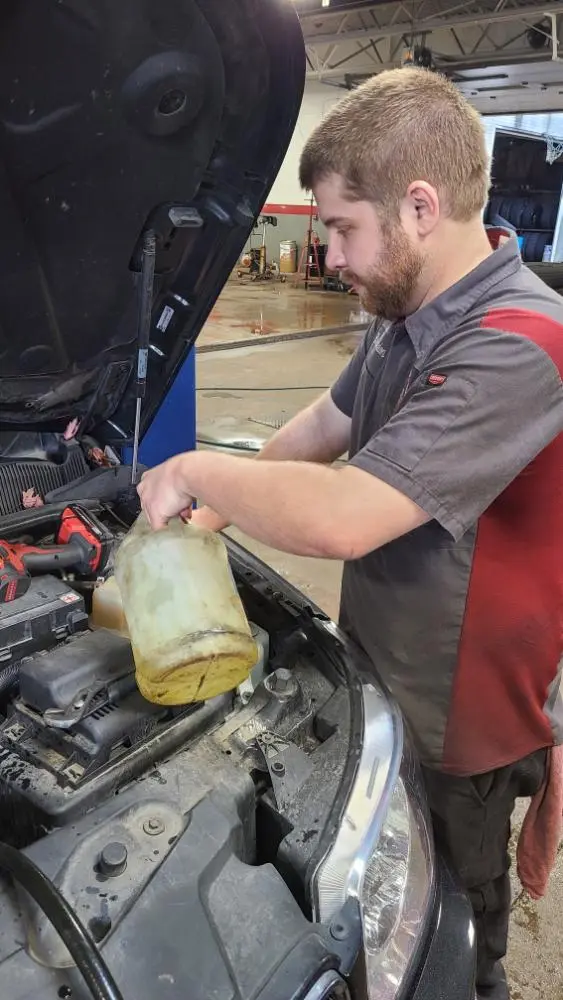
As you see, there are many things to have checked on your Vehicle before you Head down the Road. If you are Mechanically Inclined and can check these things yourself, Great, otherwise contact an Auto Repair Shop Near me and Schedule an appointment. One last tip, always have a Cell Phone and an Emergency Kit with you when you are traveling. Be Safe and have a Great Vacation!
05/30/2024Read more
Do you Need to Replace your Cabin Air Filter in your Car?
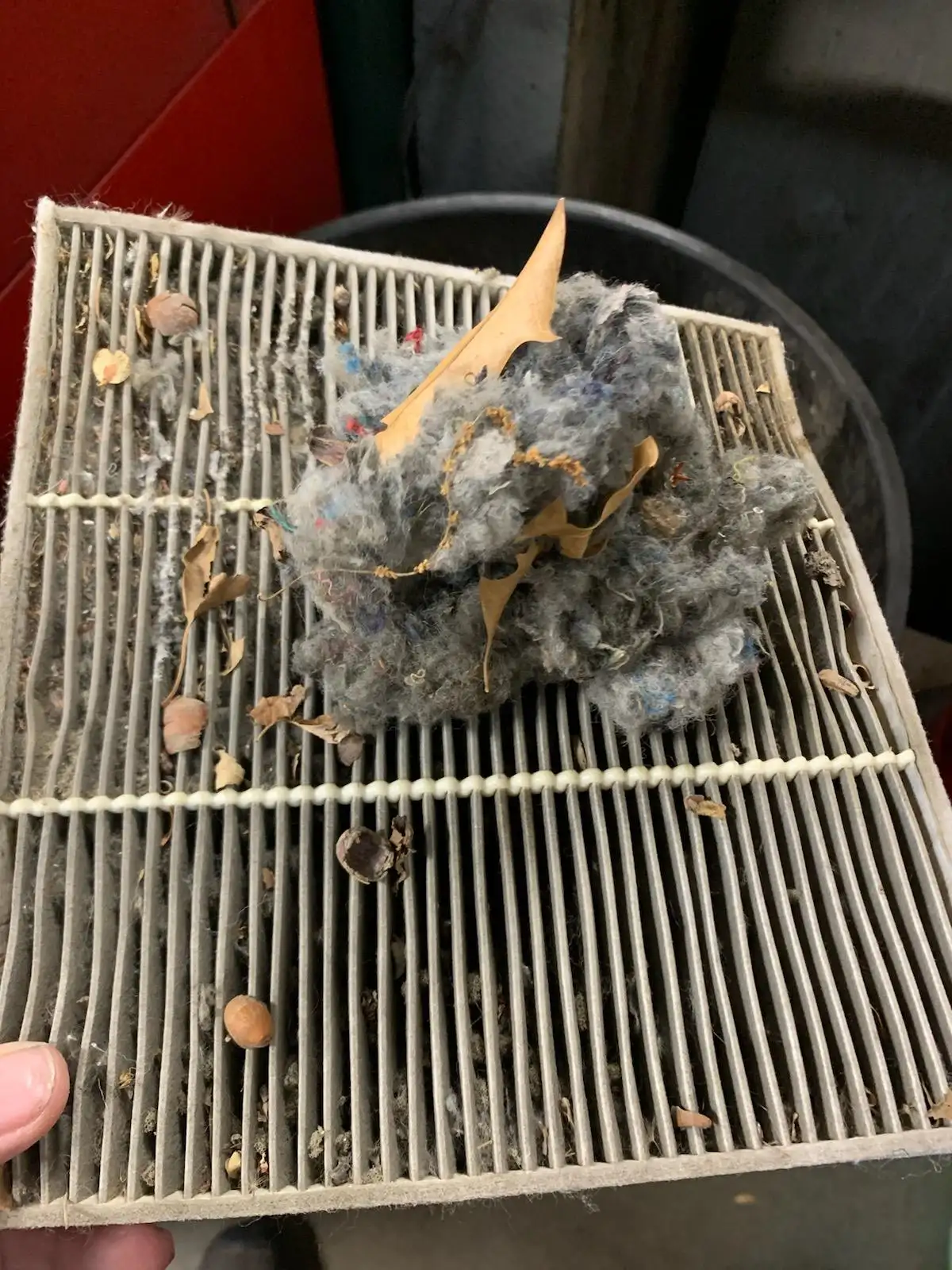
Most Manufactures suggest that you should change your Cabin Air Filter every 12,000 to 15,000 miles. Check your Vehicle’s manual to find out what is recommended with your vehicle.
Cabin Air Filters should be included as part of your Maintenance checklist with every oil change, but many times it is missed or a declined service by many Vehicle Owners.
The Cabin Air Filter catches or filters the air coming to the interior of your vehicle through your air conditioner, heater or ventilation. It grabs dust, pollen, leaves, and even the dirty exhaust from other vehicles on the Road. A new Cabin Air filter keeps the air cleaner inside your car which helps people with allergies.
A clogged or dirty Cabin Air Filter impacts the way your Air Conditioner or Heater work. They have to work a lot harder to heat or cool the interior and it takes much longer to get the temperature to a comfortable level in the interior of your car. Also, since the Air Conditioner and Heater have to work a lot harder, your Vehicle’s Engine also has to work harder. Since your Engine is working harder, this will also impact your Fuel efficiency too.
Even though the Manufactures suggest changing the Cabin Air Filter every 12,000 to 15,000 miles, you may have to change it more often. It will depend on the conditions of the roads you are driving on. If you drive in an Urban area with a lot of vehicles, there will naturally be more smog and dirty exhaust that the Cabin Air Filter catches. Or, if you drive on a lot of gravel roads, or roads with a lot of dust, leaves and other debris, your Cabin Air Filter will get clogged.
Lastly, the smell in the inside of your Vehicle could be impacted by a Clogged or Dirty Cabin Air Filter.
Make sure your Service Technician is checking your Cabin Air Filter with every Oil Change
06/13/2024Read more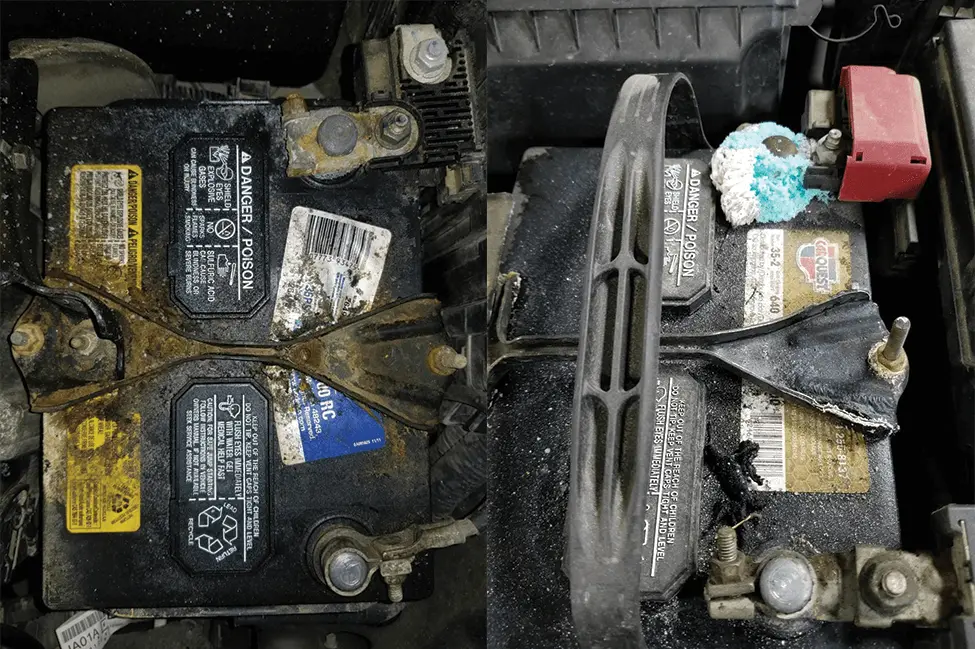
Why do Car Batteries Corrode?
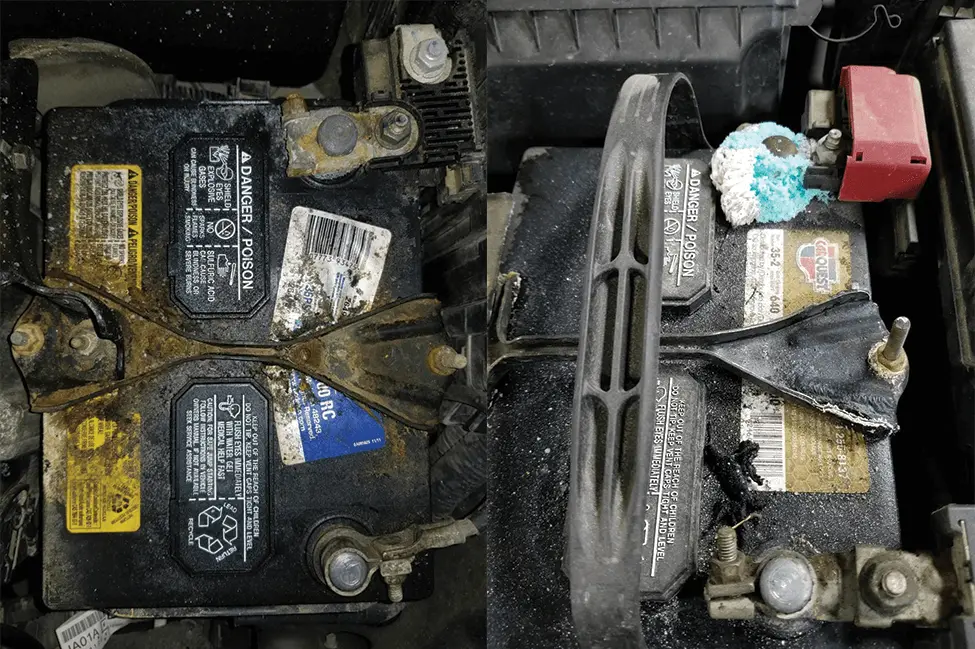
If your Battery is cracked or damaged, Battery Acid may be leaking causing the corrosion around the Battery Terminals. Sometimes hot temperatures in the Summer can cause your Battery to Corrode. Built up corrosion around the Battery Terminals can cause problems like Slow Cranking during Start up, Dim or Weak Lights, and even a Clicking Sound when you Turn your Key.
It is best to keep our Battery Terminals clean. Try putting Baking Soda over the corroded area. This will neutralize the Battery Acid. Add a small amount of Water to activate the baking soda. This chemical reaction will clean up the corrosion. Just wipe the Terminals clean.
Never try to Jump Start a Vehicle with a corroded battery. Take the time to clean the corrosion off first before putting the Jumper Cables on.
Sometimes a corroded battery just needs to be replaced. Find an Auto Repair Shop like Big A Auto Sales & Service who would be happy to help you find the correct Battery for your Vehicle.
04/07/2024Read more
How do you know if your AC needs to be Recharged?
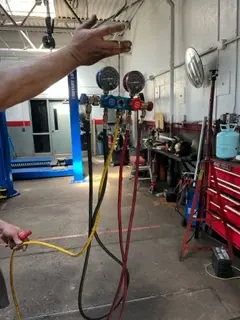
If your air conditioner blows Warm Air instead of Cold, your Air Conditioner may need to be Recharged. Air Conditioners only hold a small amount of refrigerant in their systems, so only a small leak can cause the air to be warm.
Take your Vehicle to a Repair Shop Near Me that can Test and work on your Car’s Air Conditioning System. System Pressures will be checked by an Auto Repair Technician. If the system is low, a technician will add Refrigerant/Freon and look for a leak. Once the leak is found, all the Refrigerant/Freon will have to be removed in order to fix the leak. Once the leak is fixed, Refrigerant is added again.
Sometimes the leak is as simple as replacing a hose, but other times fixing the problem could be replacing the Sensors, the AC Compressor or the Condenser.
04/12/2024Read more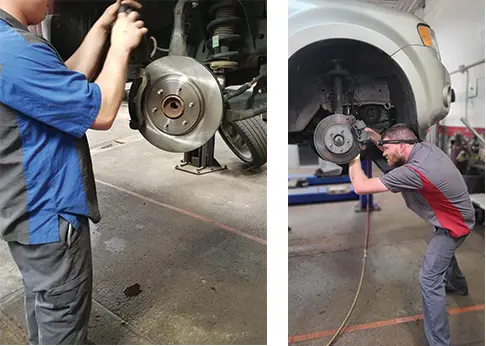
Is it Safe to Drive when Brakes are Grinding?

You can Drive for a while with Grinding Brakes before they are completely worn out, but that is not a good idea!
The Grinding Noise can be a result of your Rotor disc and your Caliper rubbing together. This happens when the Brake Pads are wearing down or have worn down completely causing the Metal to Metal Grinding Sound that you hear.
Driving too long after you hear the Grinding Noise can damage your Brake Rotors and Brake Calipers. This can get Expensive!
If you hear any Squeaks or Grinding Sounds when you step on the Brakes, take your Vehicle to an Auto Repair Shop Near Me for a Brake Inspection and Brake Repair. Replacing Brake Pads is less expensive than having to replace Rotors and Calipers.
09/26/2024Read more
What causes your AC Compressor to Fail?
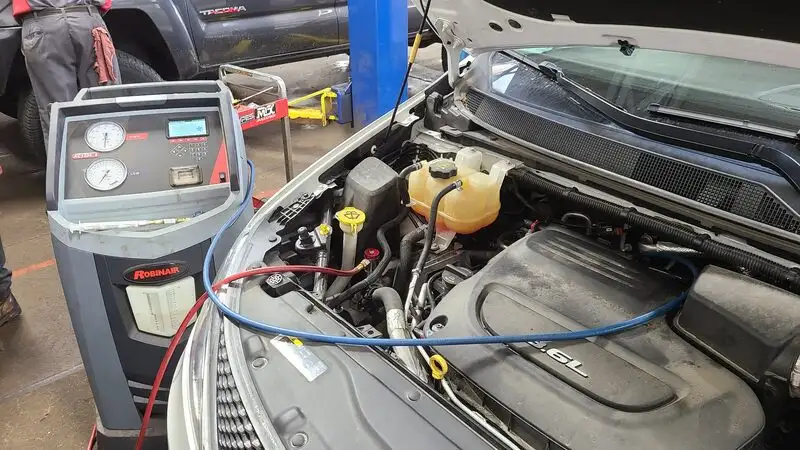
Low Refrigerant Level – If there is not enough Freon or there is air in the system, it will cause Friction inside of the Compressor which can damage it.
Dirty Condenser – Dirt or Debris in the Condenser can cause the Compressor to work harder and overheat. The Condenser must be kept clean.
Clogged Evaporator Coils – Evaporator Coils are another part of your Air Conditioning System that can become dirty and clogged. This makes your Compressor work harder and could overheat.
Sensors – The Sensors detect Low or High Refrigerant Levels. If the Sensors are not working properly and the Refrigerant becomes too low, this can damage the Compressor.
Lubrication – The Compressor needs Oil to run smoothly. Without the lubrication, Friction inside the Compressor can damage it.
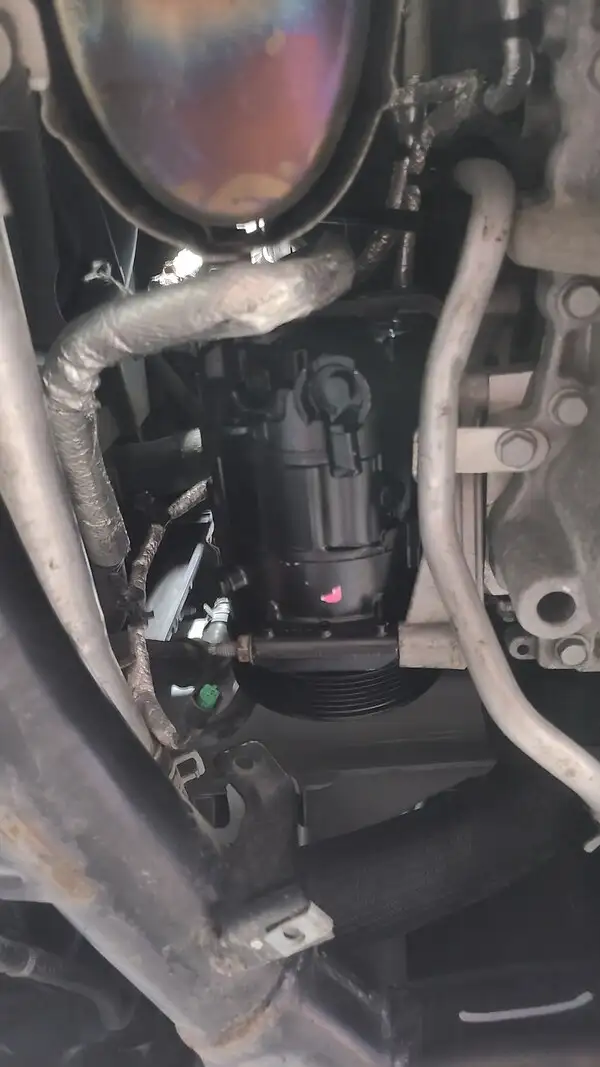
Age of Compressor – Compressors wear out. The average lifespan of a Compressor is 10 years.
The Compressor is the Heart of your Air Conditioning System and you want to keep it working properly. Take your vehicle to a trusted Auto Repair Shop and have a Service Technician go over your entire Air Conditioning System. A once a year Air Conditioning Checkup is recommended.
05/17/2024Read more
Does the Outside Temperature affect how your Car’s Air Conditioner works?
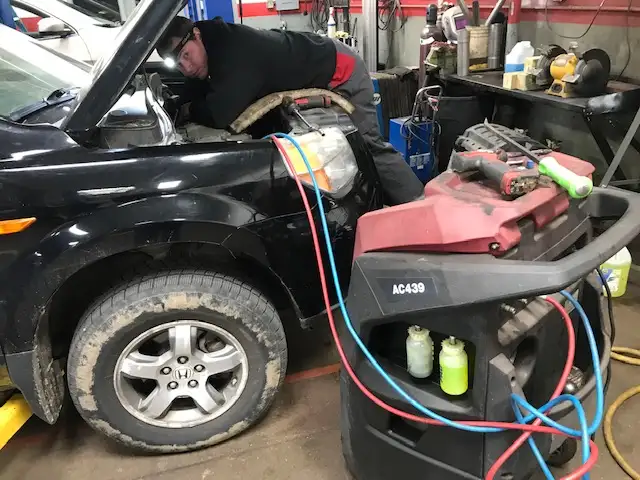
Your Car’s Air Conditioner must work much harder when it is hot outside. The hotter it gets, the harder it works to keep your cool. Rising temperatures not only affect the air conditioner, but it also puts a strain on the car’s battery, belts, hoses, and fluids.
If you take your vehicle to an Auto Repair Shop that specializes in AC work, they should be able to keep your AC working properly and may only have to top off the Refrigerant every 2 – 3 years. If the gas seems to be escaping, then there probably is a leak somewhere in the AC System. Your Mechanic will be able to test the Cooling System, find the Leak, and Repair it.
Sometimes the hotter it gets outside the less it feels like the AC is working. We all think more Freon is what is needed, and yes that could be the problem, but if the AC Compressor doesn’t work correctly, there is nothing to circulate the Freon.
Overheating, lack of Lubrication, and low Freon Levels can all cause AC Compressor problems and sometimes it could be that the Clutch isn’t engaging. Of course, it will be the hottest day of the year for the Air Conditioning not to work!
Your Mechanic will be happy to have a look at your entire AC System.
05/12/2024Read more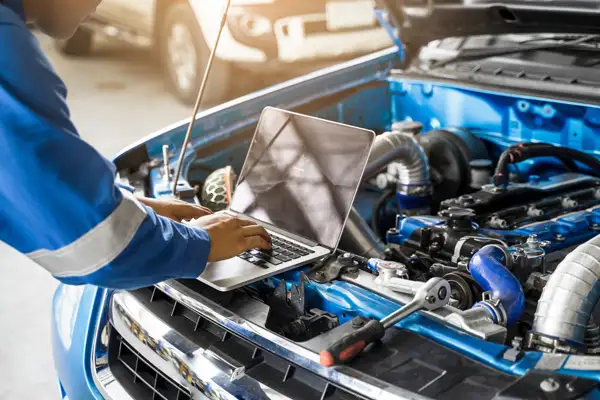
Engine Diagnostics Tips
Schedule a complete and Engine Diagnostics (Professional Maintenance) check every 15, 30, 60, and 90,000 miles. The diagnostics of a car’s engine are very complicated. Nothing really tells you when anything has gone awry. Most cars have a Check Engine light that turns on, but even this light does not indicate exactly what the problem is. The only way to find out is to have your mechanic run an engine diagnostics test on your vehicle. There are several reasons to have a full diagnostics test run on your car. With today’s vehicles being basically run by computers, if anything goes wrong an indicator light will turn on. Take the vehicle to your mechanic when the light comes on. Make sure you have a qualified, certified mechanic that you know and trust. He will be the one, who will help keep your car running smoothly for a long time. If you are a do-it-yourselfer, you can get many diagnostic supplies at your local mechanic shop as well. In addition, he can help you with any questions you may have. For most new cars it is necessary to have state of the art diagnostic equipment and trained technicians to decipher the root cause of your car engine’s issues.
11/02/2022Read more
Air Filter Tips
Check and/or change your Air Filter every 6 months to improve fuel economy and keep your engine running smoothly. It’s hard to give a specific time or mileage figure because the life of the filter depends on how much crud it ingests. A filter that lasts 20,000 or even 30,000 miles on a vehicle that’s driven mostly on expressways may last only a month or two in a rural setting where the vehicle is driven frequently on gravel roads. Changing it annually or every 15,000 miles for preventative maintenance may be a good recommendation for the city driver, but not its country cousin.
Regardless of the mileage or time, a filter should be replaced before it reaches the point where it creates a significant restriction to airflow. But when exactly that point is reached is subject to opinion. A slightly dirty filter actually cleans more efficiently than a brand new filter. That’s because the debris trapped by the filter element helps screen out smaller particles that try to get through. But eventually every filter reaches the point where it causes enough of a pressure drop to restrict airflow. Fuel economy, performance and emissions begin to deteriorate and get progressively worse until the dirty filter is replaced.
Many heavy-duty trucks have a “restriction” meter on the air filter housing that signals when the filter is dirty enough to need replacing. But lacking such a device, the best you can do is guess. Removing the filter and holding it up to a light will show you how dirty it is. If it’s really caked with dirt, it obviously needs to be replaced. Trying to shake or blow the dirt out is a waste of time because too much of it will be embedded in the filter fibers. NOTE: Many filters that appear to be dirty are in fact still good and do not really need to be replaced. So it’s up to you. If you think it’s dirty, replace it. If you don’t think it’s dirty enough to need replacing, then don’t.
11/02/2022Read more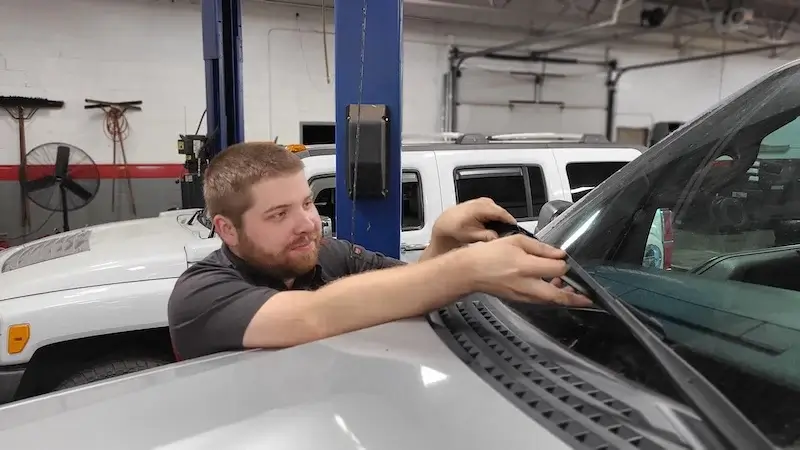
How to winterize a car
The best way to keep your vehicle in good condition is by proper maintenance. These tips will help you get the most out of your vehicle this winter.
- Check your battery and make sure it is charged. A weak battery will not only make it harder to start your car in cold weather but can also affect the overall performance of your vehicle.
- Make sure your coolant levels are full and do not hesitate to change your antifreeze if necessary. This will help keep your engine from freezing and needing expensive repairs.
- Inspect your tires carefully. In winter, good traction is essential for safety. Make sure your tires have adequate tread and are properly inflated. Consider investing in snow tires if you live in an area that gets a lot of snowfall.4. It is also a good idea to have your car’s brakes checked before winter. Slippery roads make it more difficult to stop, so you want to make sure your brakes are in good condition.
- Be sure to keep your gas tank at least half full. This will help prevent the fuel line from freezing and will give you a little extra weight in the back end, which can help with traction on icy roads.
- Lastly, make sure you have an emergency kit in your car. This should include items like a flashlight, flares, jumper cables, a first-aid kit, and a bag of sand or cat litter (for traction). By taking these simple steps, you can help ensure that your car is ready for winter weather.
09/28/2022Read more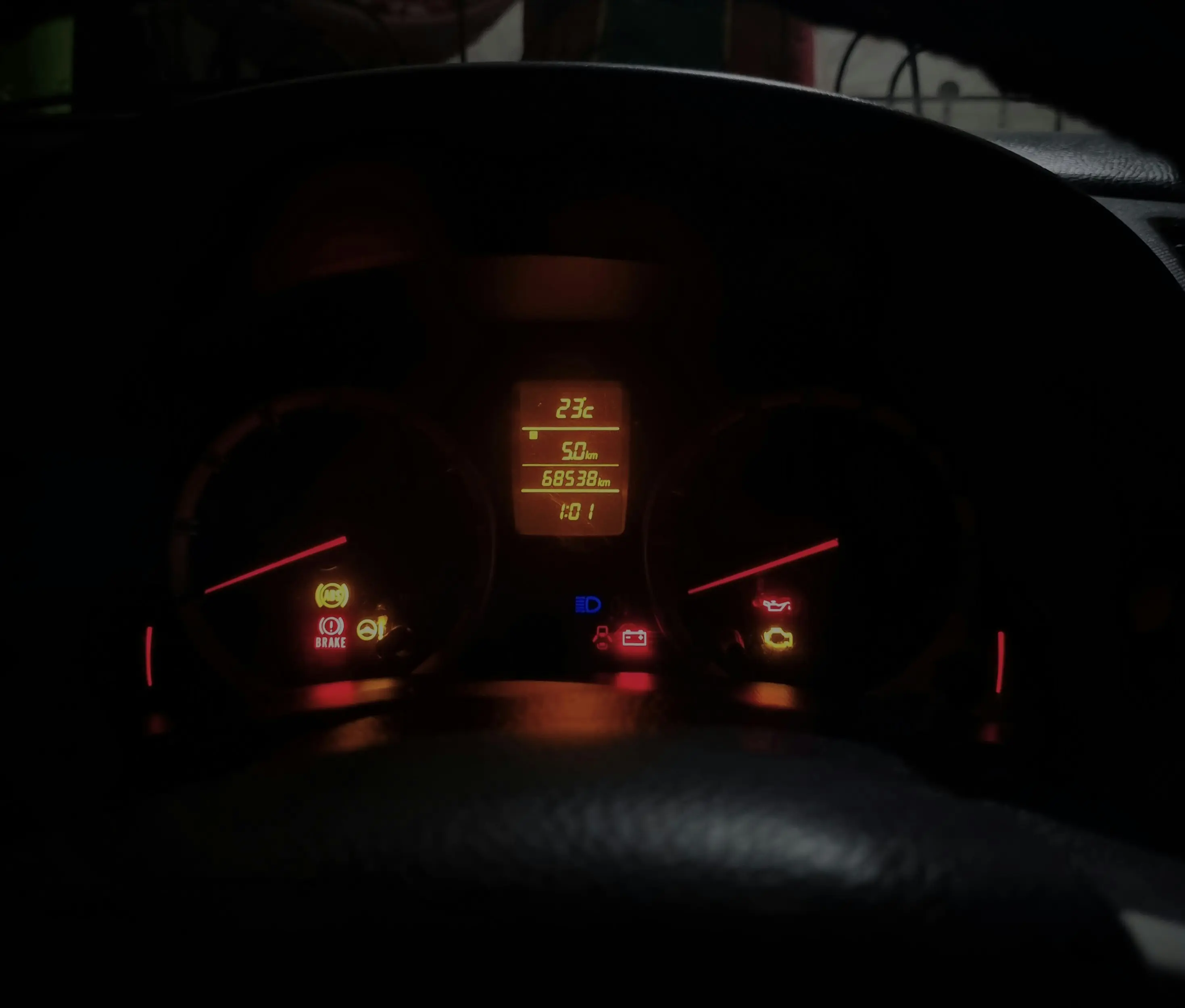
Why is my check engine light on?
If your car’s check engine light comes on, you could be facing some expensive repairs. Your car’s check engine light can come on for a number of reasons. The most common reason is that your car’s engine is not running as efficiently as it should be. This could be caused by several things, including a dirty air filter, spark plugs that need to be replaced, or a problem with your fuel injectors.
If your car’s check engine light comes on, the first thing you should do is take it to a mechanic and have them run a diagnostic test. This will help them identify the problem and give you an estimate of how much it will cost to fix it.
The most important thing you can do if your car’s check engine light comes on is to not ignore it! Ignoring the problem will only make it worse and could lead to engine damage. If you take care of the problem right away, you can avoid costly repairs down the road. If you have any questions about your car’s check engine light or what to do if it comes on, feel free to ask a mechanic. They will be able to help you troubleshoot the problem and get your car back on the road in no time!
09/15/2022Read more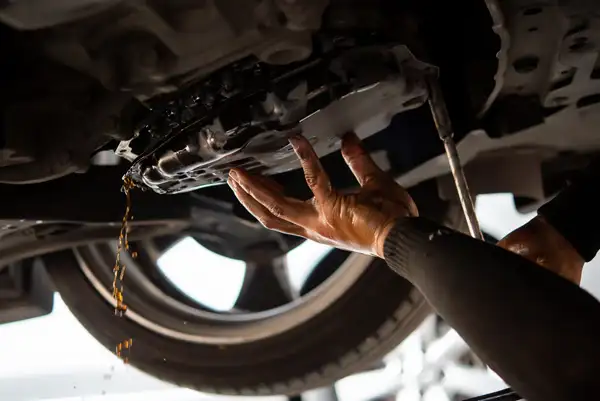
Transmission Fluid Flush Tips
Change transmission fluid every 30,000 miles. Most owner’s manuals say it isn’t necessary. Yeah, right. That’s why transmission shops are making a fortune replacing burned out automatic transmissions. For optimum protection, change the Transmission Fluid and filter every 30,000 miles (unless you have a new vehicle that is filled with Dexron III ATF, which is supposed to be good for 100,000 miles).Why ATF Wears Out
An automatic transmission creates a lot of internal heat through friction: the friction of the fluid churning inside the torque converter, friction created when the clutch plates engage, and the normal friction created by gears and bearings carrying their loads. It doesn’t take long for the automatic transmission fluid (ATF) to heat up once the vehicle is in motion. Normal driving will raise fluid temperatures to 175 degrees F., which is the usual temperature range at which most fluids are designed to operate. If fluid temperatures can be held to 175 degrees F., ATF will last almost indefinitely — say up to 100,000 miles. But if the fluid temperature goes much higher, the life of the fluid begins to plummet. The problem is even normal driving can push fluid temperatures well beyond safe limits. And once that happens, the trouble begins. At elevated operating temperatures, ATF oxidizes, turns brown and takes on a smell like burnt toast. As heat destroys the fluid’s lubricating qualities and friction characteristics, varnish begins to form on internal parts (such as the valve body) which interferes with the operation of the transmission. If the temperature gets above 250 degrees F., rubber seals begin to harden, which leads to leaks and pressure losses. At higher temperatures the transmission begins to slip, which only aggravates overheating even more. Eventually the clutches burn out and the transmission calls it quits. The only way to repair the damage now is with an overhaul — a job which can easily run upwards of $1500 on a late model front-wheel drive car or minivan. As a rule of thumb, every 20 degree increase in operating temperature above 175 degrees F. cuts the life of the fluid in half! At 195 degrees F., for instance, fluid life is reduced to 50,000 miles. At 220 degrees, which is commonly encountered in many transmissions, the fluid is only good for about 25,000 miles. At 240 degrees F., the fluid won’t go much over 10,000 miles. Add another 20 degrees, and life expectancy drops to 5,000 miles. Go to 295 or 300 degrees F., and 1,000 to 1,500 miles is about all you’ll get before the transmission burns up. If you think this is propaganda put forth by the suppliers of ATF to sell more fluid, think again. According to the Automatic Transmission Rebuilders Association, 90% of ALL transmission failures are caused by overheating. And most of these can be blamed on worn out fluid that should have been replaced. On most vehicles, the automatic transmission fluid is cooled by a small heat exchanger inside the bottom or end tank of the radiator. Hot ATF from the transmission circulates through a short loop of pipe and is thus “cooled.” Cooling is a relative term here, however, because the radiator itself may be running at anywhere from 180 to 220 degrees F.! Tests have shown that the typical original equipment oil cooler is marginal at best. ATF that enters the radiator cooler at 300 degrees F. leaves at 240 to 270 degrees F., which is only a 10 to 20% drop in temperature, and is nowhere good enough for extended fluid life. Any number of things can push ATF temperatures beyond the system’s ability to maintain safe limits: towing a trailer, mountain driving, driving at sustained high speeds during hot weather, stop-and-go driving in city traffic, “rocking” an automatic transmission from drive to reverse to free a tire from mud or snow, etc. Problems in the cooling system itself such as a low coolant level, a defective cooling fan, fan clutch, thermostat or water pump, an obstructed radiator, etc., will also diminish ATF cooling efficiency. In some cases, transmission overheating can even lead to engine coolant overheating! That’s why there’s a good demand for auxiliary add-on transmission coolers. Auxiliary Cooling An auxiliary transmission fluid cooler is easy to install and can substantially lower fluid operating temperatures. The plate/fin type cooler is somewhat more efficient than the tube and fin design, but either can lower fluid temperatures anywhere from 80 to 140 degrees when installed in series with the stock unit. Typical cooling efficiencies run in the 35 to 50% range.Atf Fluid Types
What kind of automatic transmission fluid should you use in your transmission? The type specified in your owner’s manual or printed on the transmission dipstick. For older Ford automatics and certain imports, Type “F” is usually required. Most Fords since the 1980s require “Mercon” fluid, which is Ford’s equivalent of Dexron II. For General Motors, Chrysler and other imports, Dexron II is usually specified. NOTE: Some newer vehicles with electronically-controlled transmissions require Dexron IIe or Dexron III fluid. GM says its new long-life Dexron III fluid can be substituted for Dexron II in older vehicle applications. CAUTION: Using the wrong type of fluid can affect the way the transmission shifts and feels. Using Type F fluid in an application that calls for Dexron II may make the transmission shift too harshly. Using Dexron II in a transmission that requires Type F may allow the transmission to slip under heavy load, which can accelerate clutch wear.Changing The Fluid
It’s a messy job because there’s no drain plug to change the fluid, but you can do it yourself if you’re so inclined. To change the fluid, you have to get under your vehicle and remove the pan from the bottom of the transmission. When you loosen the pan, fluid will start to dribble out in all directions so you need a fairly large catch pan. You should also know that removing the pan doesn’t drain all of the old fluid out of the transmission. Approximately a third of the old fluid will still be in the torque converter. There’s no drain plug on the converter so you’re really only doing a partial fluid change. Even so, a partial fluid change is better than no fluid change at all. A typical fluid change will require anywhere from 3 to 6 quarts of ATF depending on the application, a new filter and a pan gasket (or RTV sealer) for the transmission pan. The pan must be thoroughly cleaned prior to reinstallation. This includes wiping all fluid residue from the inside of the pan and scraping all traces of the old gasket from the pan’s sealing surface. Don’t forget to clean the mounting flange on the transmission, too. When the new filter is installed, be sure it is mounted in the exact same position as the original and that any O-rings or other gaskets have been properly positioned prior to tightening the bolts. Then tighten the bolts to the manufacturer’s recommended specs. When refilling the transmission with fresh fluid, be careful not to allow any dirt or debris to enter the dipstick tube. Using a long-neck funnel with a built-in screen is recommended. CAUTION: Do not overfill the transmission. Too much fluid can cause the fluid to foam, which in turn can lead to erratic shifting, oil starvation and transmission damage. Too much fluid may also force ATF to leak past the transmission seals. Add half a quart at a time until the dipstick shows full. The transmission really isn’t full yet because the dipstick should be checked when the fluid is hot, and the engine is idling with the gear selector in Park. So start the engine, drive the vehicle around the block, then recheck the fluid level while the engine is idling and add fluid as needed until the dipstick reads full11/02/2022Read more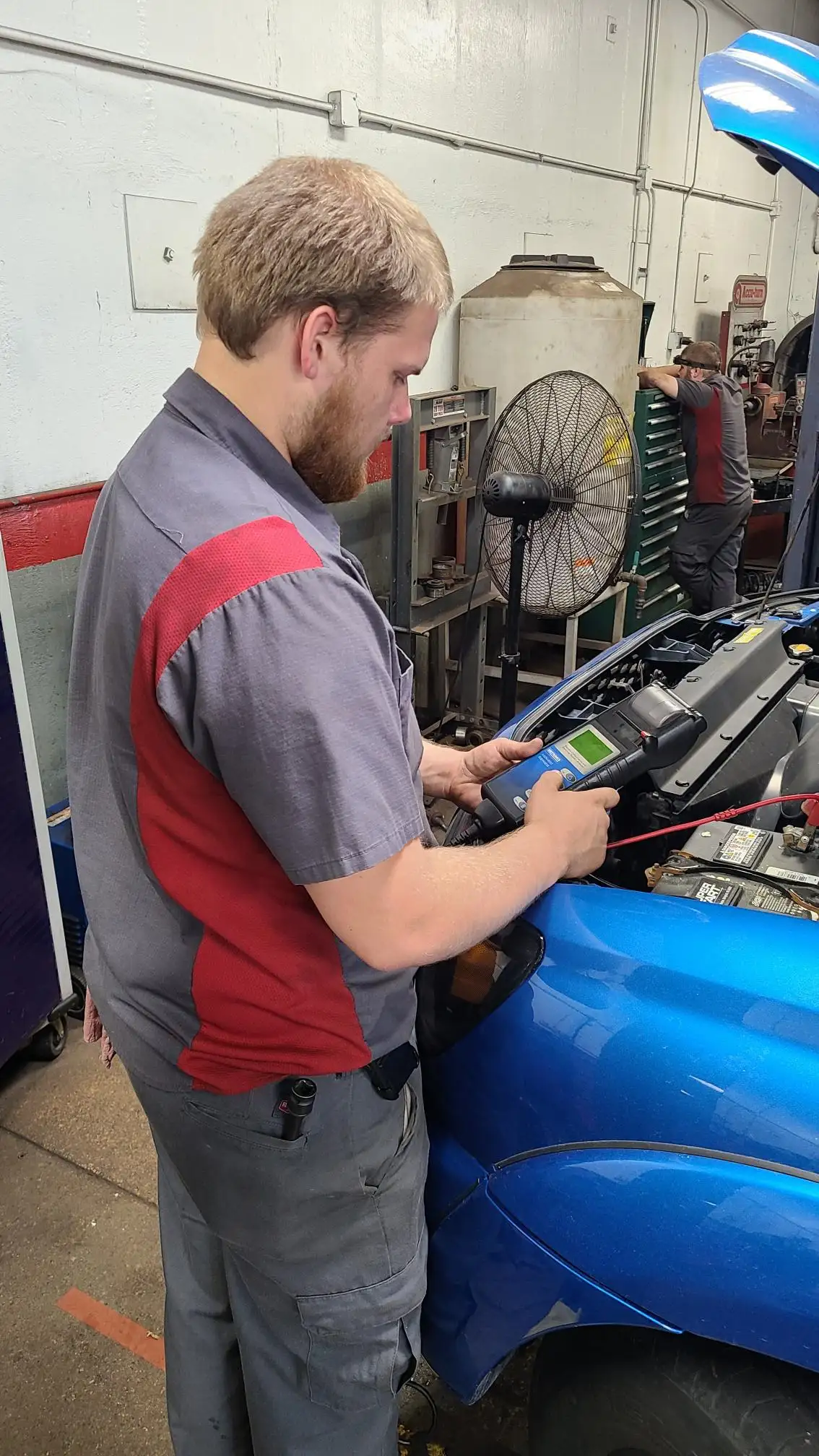
Is your Vehicle ready for the Cold Winter Weather?

Avoid any breakdowns in the Cold Weather by getting your Vehicle winterized now before the temperatures drop.
Oil Changes – Change your Oil Regularly. Cold Weather thickens Engine Oil making it harder for all the turning parts which makes it more difficult for your Engine to start. This also puts a strain on the Battery and the Starter.
Check your Battery – Take your vehicle to an Auto Repair Shop and have your battery tested. Make sure that your battery has enough Cold Cranking Amps to turn over in Cold Weather. Also make sure that the battery terminals are tight and clean.
If you can keep your Vehicle in a garage during the winter, the Battery Life will be prolonged. Batteries do not like the cold! A garage will keep the Battery warm enough to start without problems. Drive your car at least 15 minutes every week which will help to keep your Battery Charged.
Inspect your Tires – It is the Tread on your Tires that gives good Traction. To check your Tread, take a penny and insert Lincoln’s head down, into the groove between the Treads. If you see all of Lincoln’s head, it is time to get new Tires as the Tread depth is less than 2/32 inch and the Tire is dangerous to drive on. If you see part of Lincoln’s head, then your Tire is okay.

You might also consider putting on Snow Tires if you drive on a lot of Snow-Covered Roads all Winter.Also check your Tire Pressure. A drop in temperature affects Tire Pressure. The sticker on your Vehicle’s door jam or trunk lid will tell you what pressure your Tire’s should be.
Check your Wipers – Inspect your Wipers for wear or frays. Snow and Ice are hard on Wipers. You might consider putting on Winter Wiper Blades.
Add Antifreeze – Adding Antifreeze will keep your Fluids from Freezing. If you have been topping off your Radiator with water during the year, you will want to add Antifreeze as the water may have diluted your Coolant.
Brakes – If you Brake Pads show signs of getting Thin and Wearing down, you may want to have them replaced before the snowy weather. Stopping distance in the winter snow takes longer with worn brakes.
AWD and 4WD – Both of these Systems improve Traction when driving in the Snow. Check your Owner’s Manual for any recommendations for Maintenance and how to Operate them.
Belts and Hoses – Check your Belts and Hoses for worn areas, thin areas, brittle areas and leaks. Cold Weather is hard on Belts and Hoses.
Lastly, to be Safe, always have and Emergency Kit in your Vehicle in the Winter. Your kit should contain a Shovel, Tools, Jumper Cables, Warm Clothes, Boots, Gloves and Blankets.
 11/25/2024Read more
11/25/2024Read more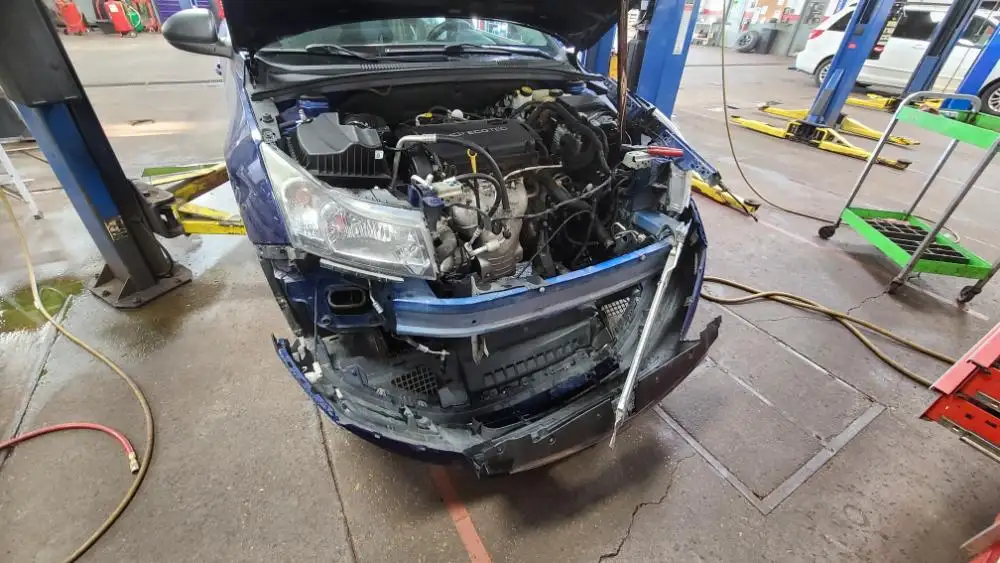
What happens when Car AC Compressor goes Bad?

If you turn on your Car’s Air Conditioner and it makes Grinding or Whining Sounds, your AC Compressor is the problem. The Compressor’s job is to keep the Refrigerant/Freon pressurized which will Cool It. The Internal Bearings in the Compressor wear down over time and they may Leak Refrigerant. An AC Compressor also has a Clutch which connects and gets its power from the Engine. If the Clutch, seizes up, you will have to Replace the Compressor.
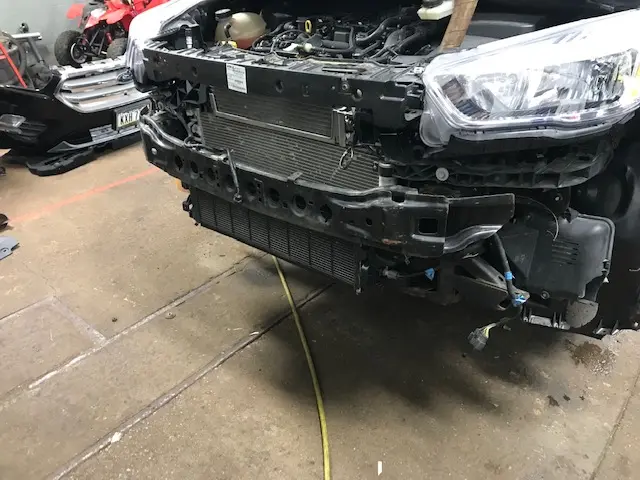
Bring your Vehicle to an Auto Repair Shop Near Me that specializes in Air Conditioning Systems. A Mechanic will Inspect and Repair your Vehicle’s Air Conditioner.
04/25/2024Read more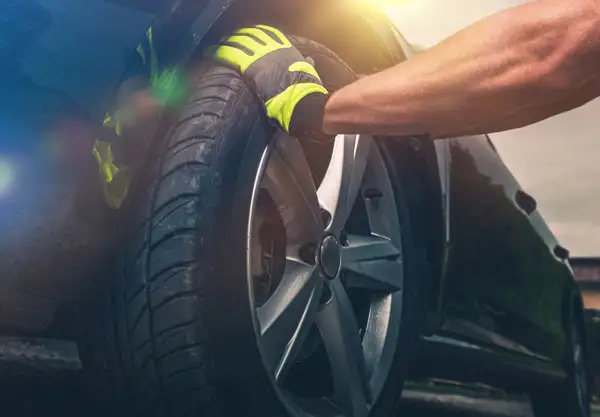
Tire Rotation Tips
Tire rotation or rotating tires is the practice of moving automobile wheels and tires from one position on the car to another, to ensure even tire wear. Tire wear becomes uneven for any number of reasons. Even tire wear is necessary to maintain consistent performance in the vehicle and to extend the overall life of a set of tires. By design, the weight on the front and rear axles of your car is different, which causes uneven wear. With most cars being front-engine cars, the front axle usually carries the majority of the weight. For rear wheel drive vehicles, the weight distribution between front and back is near 50:50. Front wheel drive vehicles also have the differential in front, adding to the weight, with a typical weight distribution of no better than 60:40. The result of this is that the front tires wear out at almost twice the rate of the rear tires, particularly when you factor in the included stress that braking adds to the front tires. Therefore, tire rotation for front-wheel drive vehicles is even more of a necessity. Turning your car (which is unavoidable) also contributes to uneven wear. The outside, the front tire is worn disproportionately. In right-hand traffic countries, the left front tire wears faster than the right front. Also, right turns are tighter than left turns, causing more tire wear. On the other hand, the sidewalls on the right tire tend to be more often bumped and rubbed against the curb while parking the vehicle, causing asymmetric sidewall wear. As would be expected, the exact opposite occurs in countries that drive on the left-hand side of the road. Mechanical issues in the vehicle may also cause uneven tire wear. The wheels need to not only be aligned with each other but also with the vehicle. The wheel that is out of alignment will tend to be pulled along by the other wheels, causing uneven wear in that tire. If the alignment is such that the vehicle pulls to one side or the other, the driver will correct by steering against the pull. Essentially, the vehicle is constantly turning, in this case, causing uneven tire wear. Additionally, if a tire is under or over-inflated, then it will wear differently than the other tires on the vehicle. Rotating will not help in this case and the inflation needs to be corrected. Automobile manufacturers recommend tire rotation frequency and pattern. Depending on the vehicle, tire rotation may be recommended every 8,000 miles. The rotation pattern is typically moving the back wheels to the front, and the front to the back, but crossing them when moving to the back. If the tires are unidirectional, the rotation can only be rotated front to back on the same side of the vehicle to preserve the rotational direction of the tires. Most unidirectional tires can be moved from side to side if they are remounted. The current school of thought recommends keeping the best tires on the rear wheels of the vehicle, whether it is front or rear wheel drive. The logic is that, if the rear wheels lose grip before the front wheels, an “oversteer” situation will occur, which is harder to control than an “understeer” situation. The intuitive idea that the front steering/driving tires need to be the best quality is not actually the case. Tire wear becomes uneven for any number of reasons. Even tire wear is necessary to maintain consistent performance in the vehicle and to extend the overall life of a set of tires.Tire rotation or rotating tires is the practice of moving automobile wheels and tires from one position on the car to another, to ensure even tire wear. Come see us today at Big A Auto Sales & Service in Dubuque, IA for your next tire rotation or service!
11/02/2022Read more
Do I Really Need to Change My Air Filters?

Cabin Air Filters should be Changed about every 30,000 miles.
Changing your Cabin Air Filter regularly will help to keep the Air Smelling Fresher in the Inside of your Vehicle. Your HVAC System will also run better if the Cabin Air Filter is not Dirty or Clogged.

A Trusted Mechanic Near Me will Inspect your Air Filters with every Oil Change and recommend when they should be changed. Ask your Technician about your Filters the next time you are in an Auto Repair Shop.
12/31/2024Read more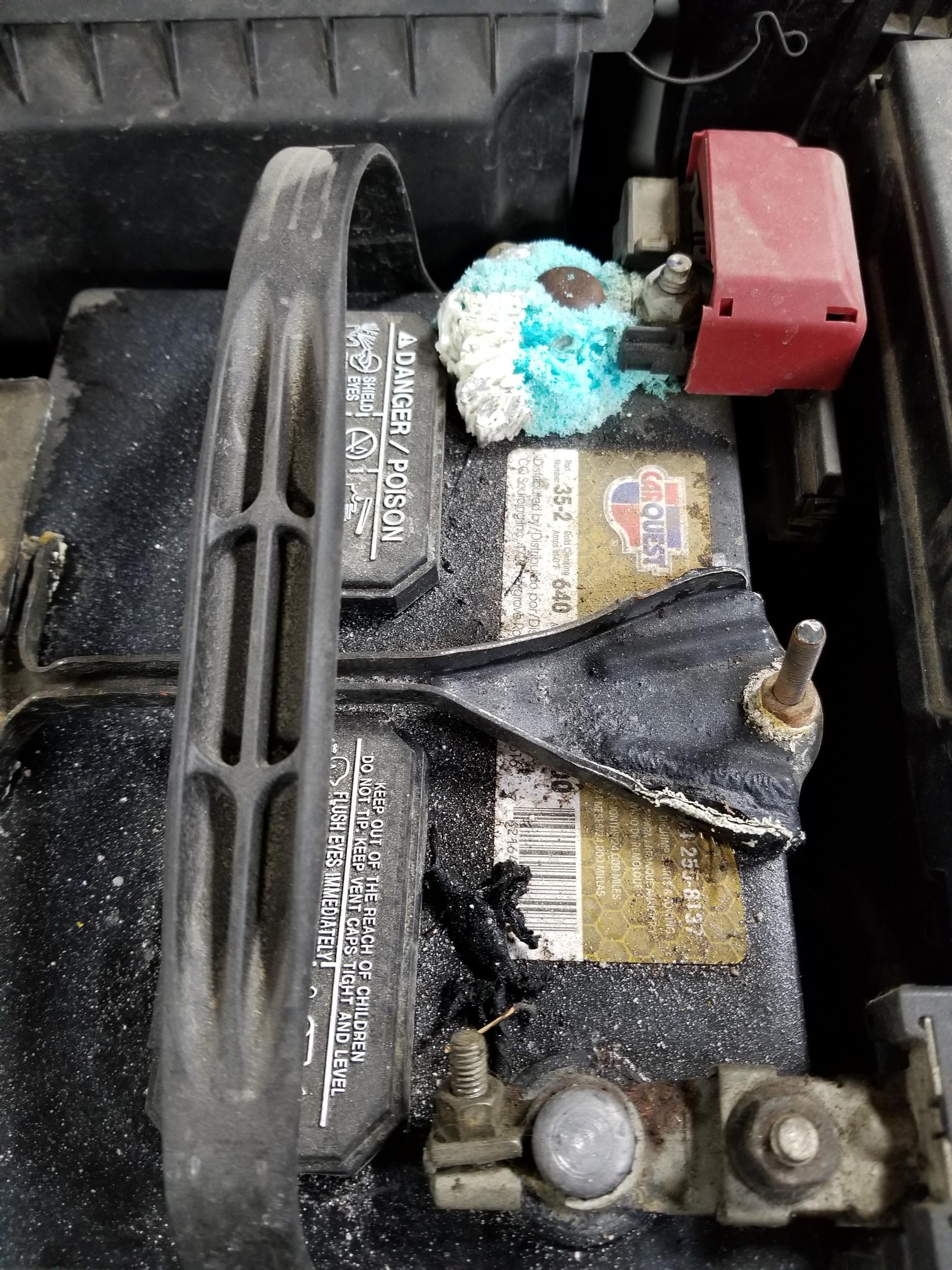
What is the crusty looking stuff on my Battery?
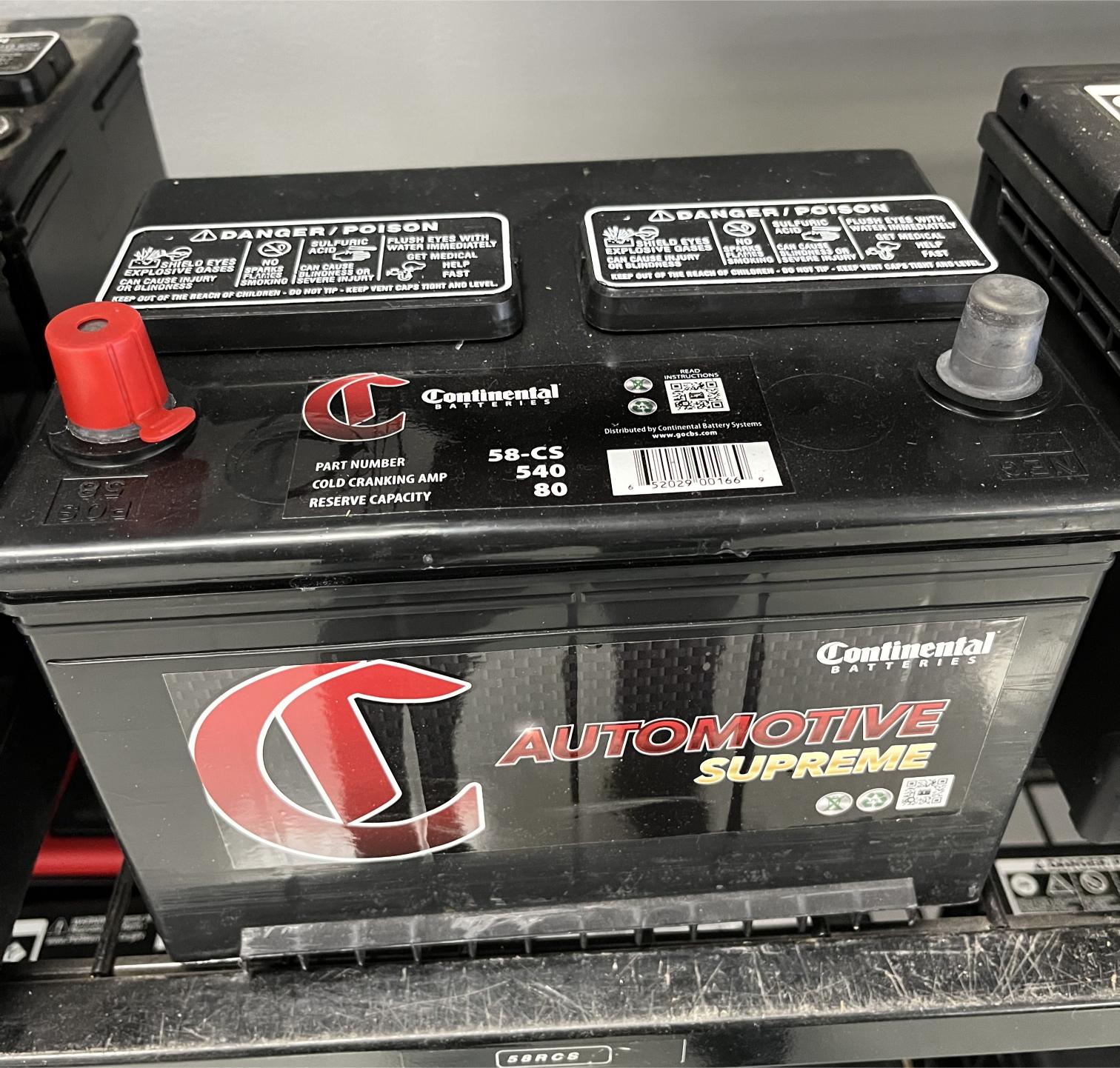
If you popped the hood on your Vehicle and see crusty gunk on your battery, you are not alone. The green, white or sometimes bluish flakey substance is called Battery Corrosion. It is caused by a chemical reaction between the battery acid and the metal on the terminals.
Over time, and especially if your battery is getting older, when your battery heats up and vents gases, it can release a tiny amount of acid mist that reacts with the metal parts causing the corrosion. The crusty buildup will interfere with the connection between your battery and your car’s electrical system.

This can cause:
Trouble when starting your car – slow engine cranking
Electrical Issues: Dim Headlights or dim/glitchy dashboard lights
If you see Corrosion around your battery terminals, you can take your vehicle to a trusted Auto Repair Shop. They will clean the corrosion, check the battery’s condition and make sure the terminals have a solid connection. If you are cleaning the corrosion yourself, be careful! Battery Acid is corrosive.
How can I prevent Corrosion on the Battery?
Have your battery tested regularly, especially if it is over 3 years old.
Make sure your battery terminals are tightly secured and clean
You can apply a little battery terminal protectant to help seal out moisture
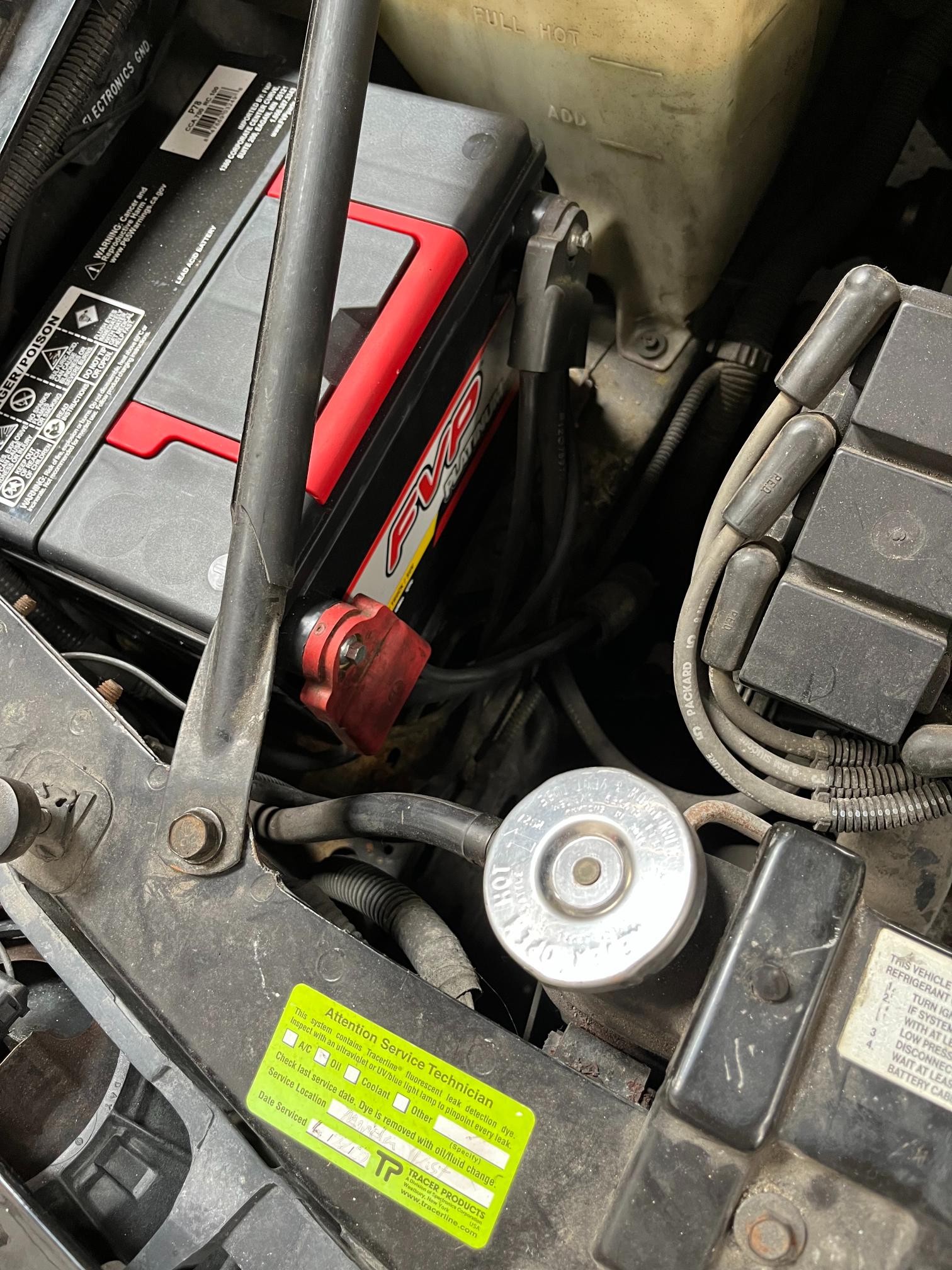 09/14/2025Read more
09/14/2025Read more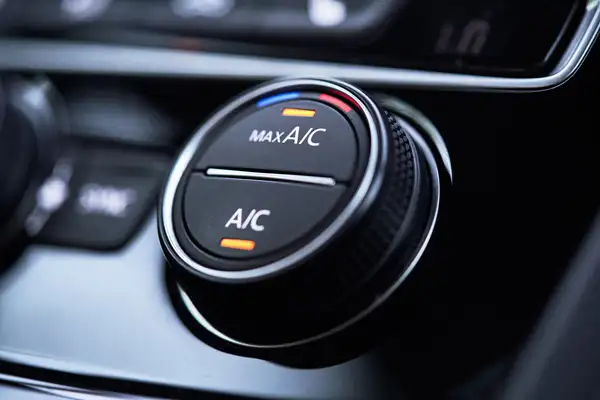
Cooling System Tips
Have your antifreeze fluid changed and Cooling System flushed every 30,000 miles or 2 years. Newer formulas, however, may last up to 50,000 miles. To check coolant level, turn the car off and wait for the engine to cool. Locate the coolant reservoir (usually a translucent plastic tank) and eyeball the level of the coolant against the full and low indicators. Just like human beings, the car needs to dissipate heat in order to avoid overheating and exhaustion. During combustion, the engine produces large amount of heat – about 4,000 degrees Fahrenheit. This is too much for the engine to bear so a cooling system is needed to keep it at a normal temperature.
Cars usually overheat due to a damaged part in the cooling system, especially the radiator, the heart of the cooling system. It is therefore necessary that all its auto parts must be in proper working condition to ensure that the whole system works efficiently. Aside from the radiator, the cooling system is composed water pump, freeze plugs, head gasket, thermostat, hoses, heater core, fan clutch and radiator fan. All these auto parts have special roles to perform thus the absence of one could significantly affect the whole cooling process and of course, the engine’s performance. Take for example the hose, this may seem to be just an ordinary part but once broken, the coolant can escape and so it’s no longer possible for the system to cool the engine. Even just the cap of the radiator is important. It holds the pressure in the cooing system; thereby, affects its stability.
How does the cooling system of your car work? The coolant, which is a mixture of anti-freeze and water, is the one that absorbs the heat from the engine. It is drawn by the water pump from the radiator and is pumped through engine block and the cylinder head to absorb the heat from the engine and its parts. It goes back to the receiving tank of the radiator through the radiator hose. The radiator has tubes that contain large amount of water and has fin area to allow outside air to pass through. As the coolant spreads over the top of the radiator tubes, it transfers heat to the air. The performance of your car is greatly dependent on your cooling system. No matter how gutsy its engine is, it can’t work normally without a cooling system. The engine can even be inutile in an instant if it overheats and all other auto parts under the hood can also be damaged. They could melt as the engine burns the fuel inside the combustion chamber and the pistons in the cylinder could expand extremely that they can no longer move to complete the whole process in the engine. Your car can possibly overheat as well. Engine overheating is one of the most common problems auto users encounter. You can avoid this by adding water to your radiator. So if you notice a problem on a particular part in your cooling system, consult the best auto mechanic in town. But if you think the problem is worst, you may as well replace it right away.
12/02/2022Read more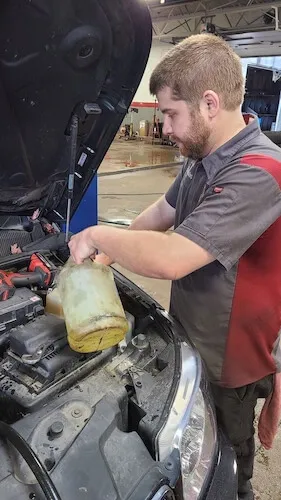
Signs Your Car Needs a Coolant Flush
Are you noticing your car is overheating more often? Or that the engine is running
much hotter than usual? If so, it might be time for a coolant flush. Car owners
need to keep on top of regular vehicle maintenance tasks to ensure their cars run
smoothly and avoid costly repairs down the road. One such task is a coolant flush.
Find out what signs indicate your car needs this service below!Overheating Engine
If you notice your engine is overheating more frequently, it could be a sign that
the coolant system needs to be flushed. A coolant flush will remove all the old
coolant from the system and replace it with fresh fluid, helping to keep your
engine running at its optimal temperature.Engine Runs Hotter Than Usual
Another symptom of a cooling system in need of a flush is if your engine starts
running hotter than normal. If the coolant level is low or there is debris clogging
up the system, it won't be able to regulate the engine temperature. This can
cause the engine to overheat, even when it's not under heavy use. A coolant flush
will clean out the system and help restore proper cooling.Coolant Leaks
If you notice any leaks coming from your car, it's important to have them checked
out as soon as possible. Coolant leaks are one potential sign that a coolant flush is
needed. Over time, the hoses and other components in the cooling system can
degrade, leading to leaks. A coolant flush will replace all the fluid in the system, as
well as any damaged hoses or other parts.If you suspect your car needs a coolant flush, the best thing to do is to bring it to
Big A Auto, your trusted mechanic. They diagnose the problem and perform the
flush correctly. Flushing the coolant system is a pretty straightforward process,
but it's important to do it correctly to avoid damaging the engine.10/27/2022Read more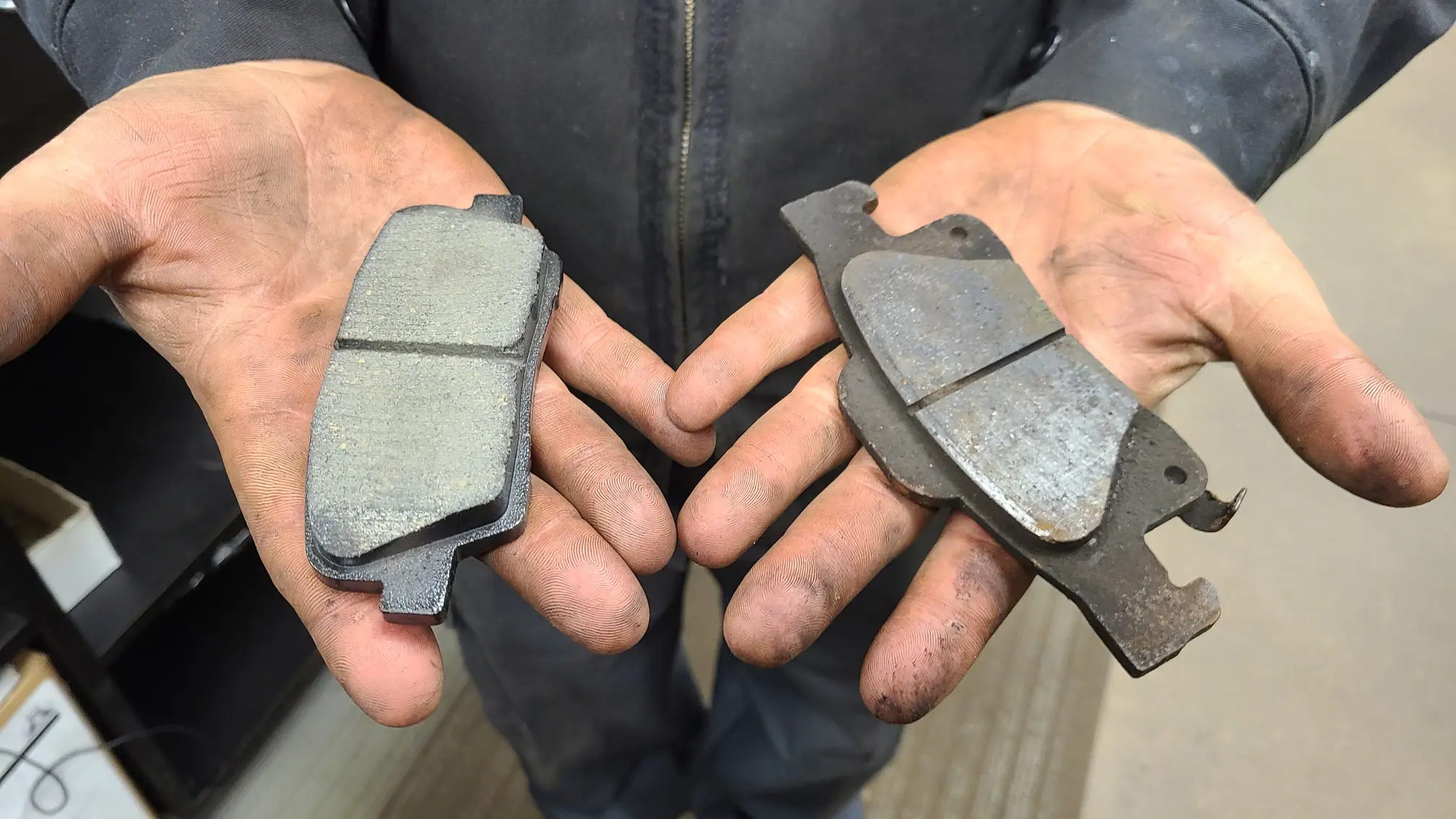
How Often Should You Get your Brakes Checked or Replaced?
This is a good question, but it really depends on how you drive your car, how often you drive it and the driving conditions. Here are some guidelines:
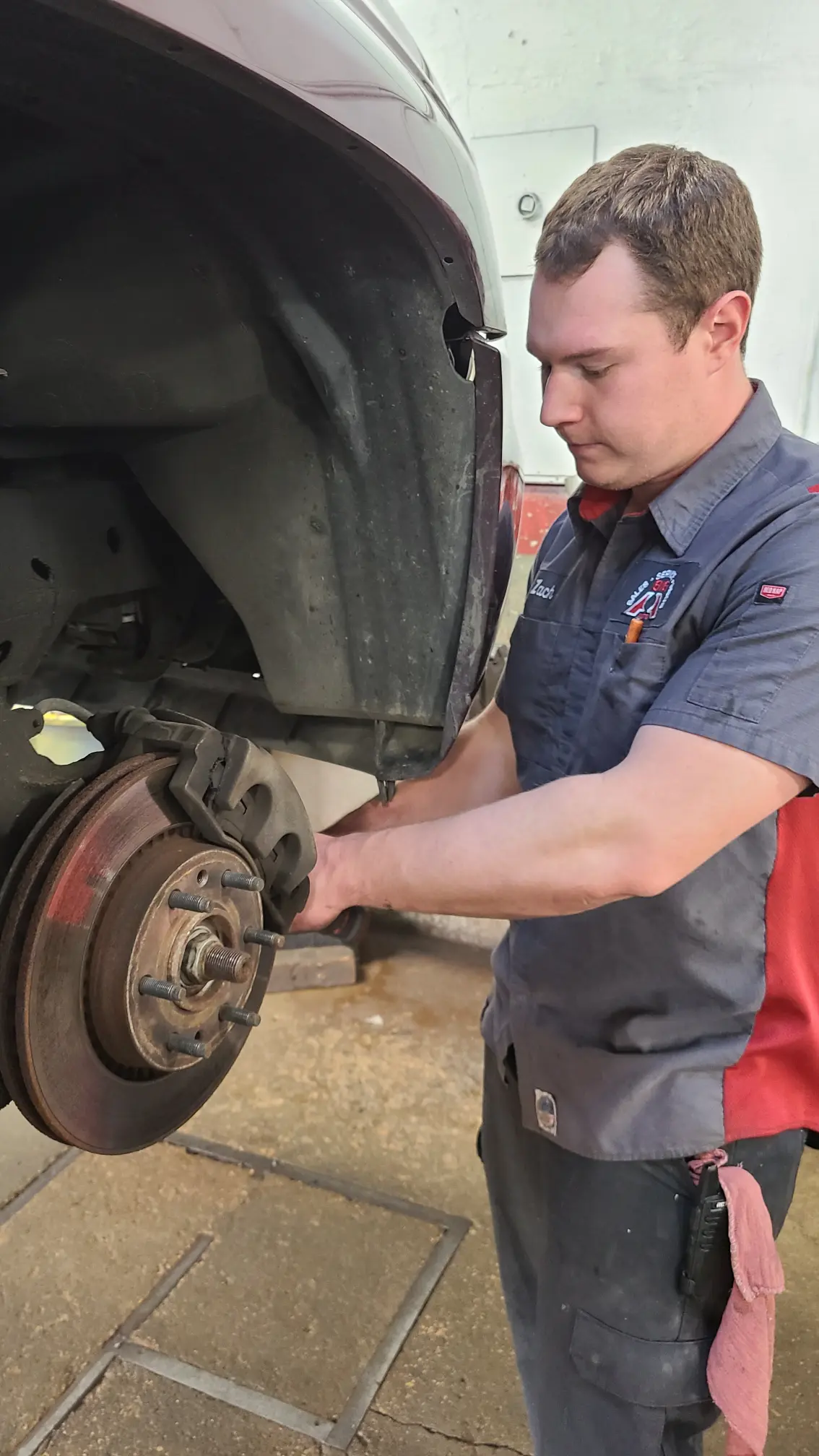
Brake Inspection:
Have your Brakes checked at least once a year or every 12,000 miles, whichever comes first. Many repair shops will Inspect your Brakes with every Tire Rotation or Oil Change.
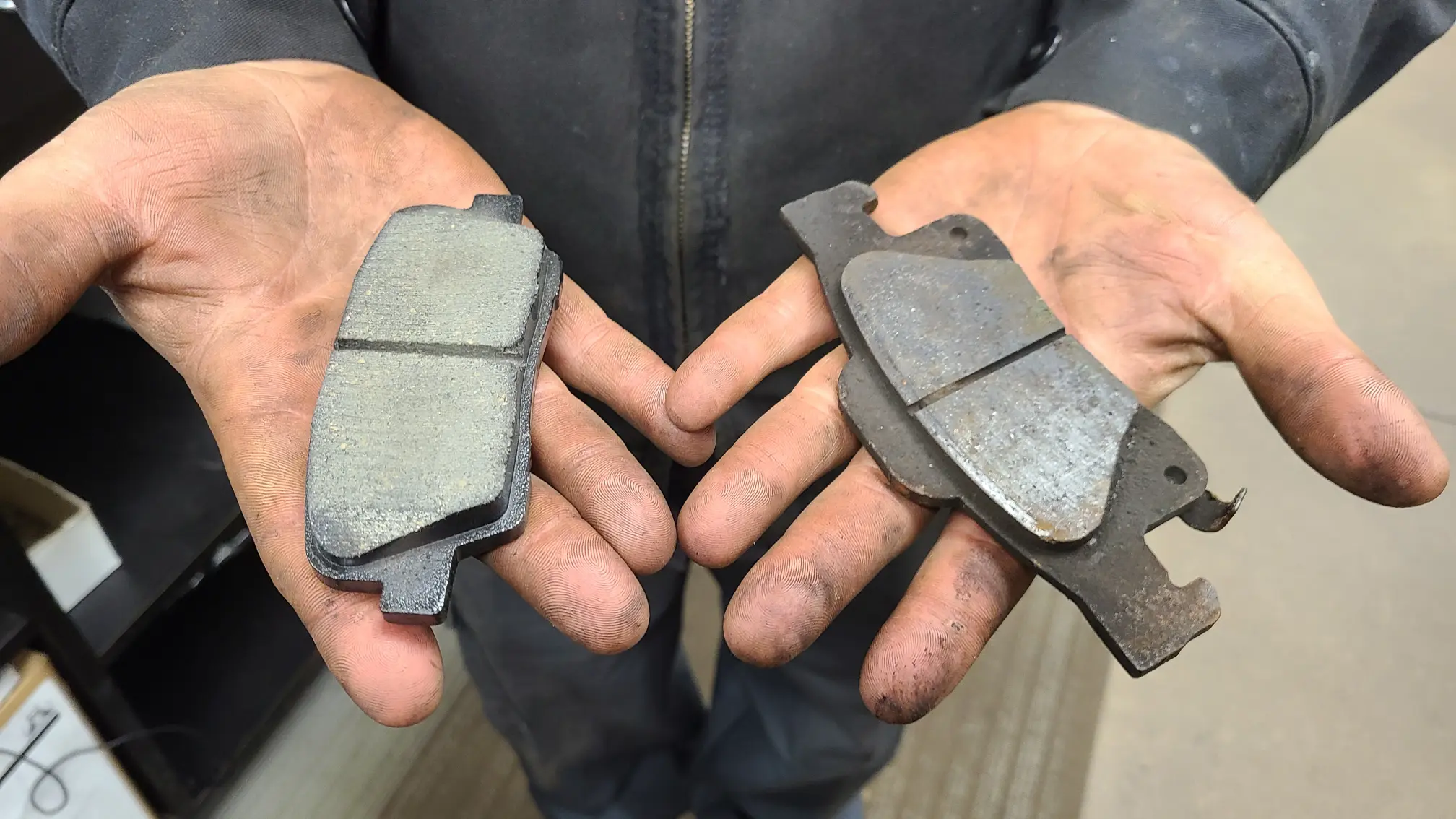
Replacing Brake Pads:
Most Brake Pads last between 30,000 and $70,000 miles. How long your pads last will depend on the following:
How and Where you Drive – City driving with lots of stop and go on the Brakes will wear down the pads quicker than Highway driving.
Brake Pad Material – Are the pads Ceramic, Semi-Metallic, Organic, etc… Ask your Auto Technician which pad is the best for you.
Vehicle Type and Weight. The Brakes will wear faster on Larger Vehicles.
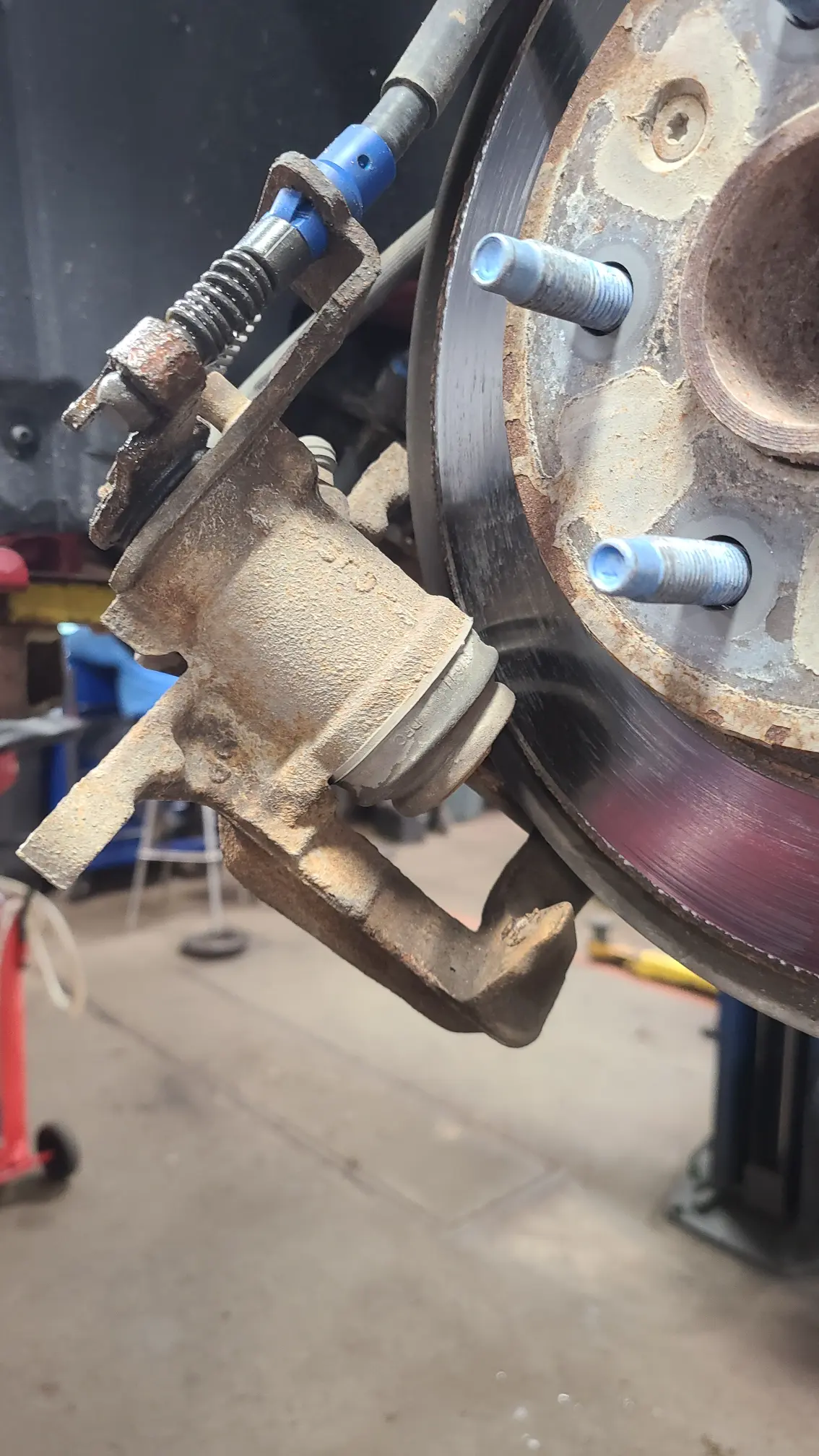
Don’t Ignore the Warning Signs:
Squeaking, Grinding, or Squealing sounds when Braking
Vibration in the Brake Pedal
Car pulls to one side when you Brake
Brake Warning Lights on the Dashboard
To be Safe, take your Vehicle to a Trusted Auto Repair Shop, for a full Vehicle Inspection of your Brakes. A Qualified Technician will gauge how your Brake Pads are Wearing and will be able to determine when you need new Brakes.
11/03/2025Read more
What Causes your Vehicle to Go Out of Alignment?

Hitting one Pothole can be enough to put your vehicle out of alignment. Even driving down Rough Roads or hitting Debris on the Road is enough of a jolt to cause the Alignment to Change. Anytime there is a shock to your tires, the Alignment can be knocked out.
We all know that Accidents or Minor Collisions will contribute to Alignment Issues, but even the most careful driver can hit the curb when parking their vehicle or drive to fast over a speed bump.

One way to check your Alignment, is to find a smooth, flat, straight stretch of road to drive down. Holding loosely to the steering wheel, does your vehicle want to pull to the side without your steering that way? Does your steering wheel stay straight or is it crooked and off center? Also, listen for Whining, Grinding or Scraping noises. Another Symptom of Misalignment is if your Tires are wearing down quickly or are wearing uneven.
If you think your Vehicle is out of Alignment, you should visit an Auto Repair Shop Near Me that can do Alignments.
03/24/2024Read more
Make An Appointment
Let us know how we can help you. Schedule your appointment online.
We are a Digital Shop
The Big A Auto technicians use the latest technology to not only tell you if there are any issues with your vehicle, but show you. If we uncover an issue the photo will be e-mailed to you for your records. At the end of every visit you will receive a detailed report regarding the general health of your vehicle. Our #1 goal is to keep you safe on the road.
Read more